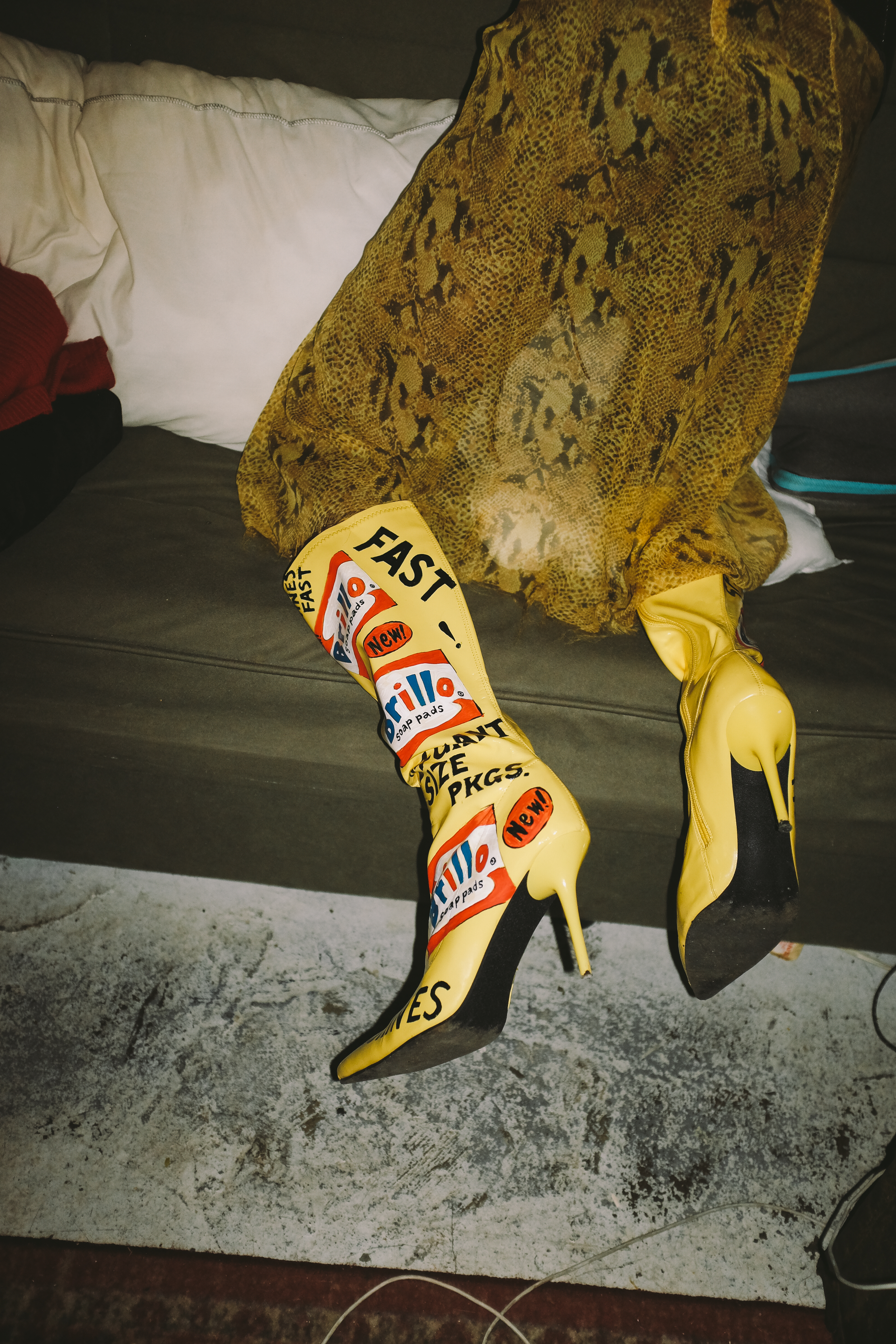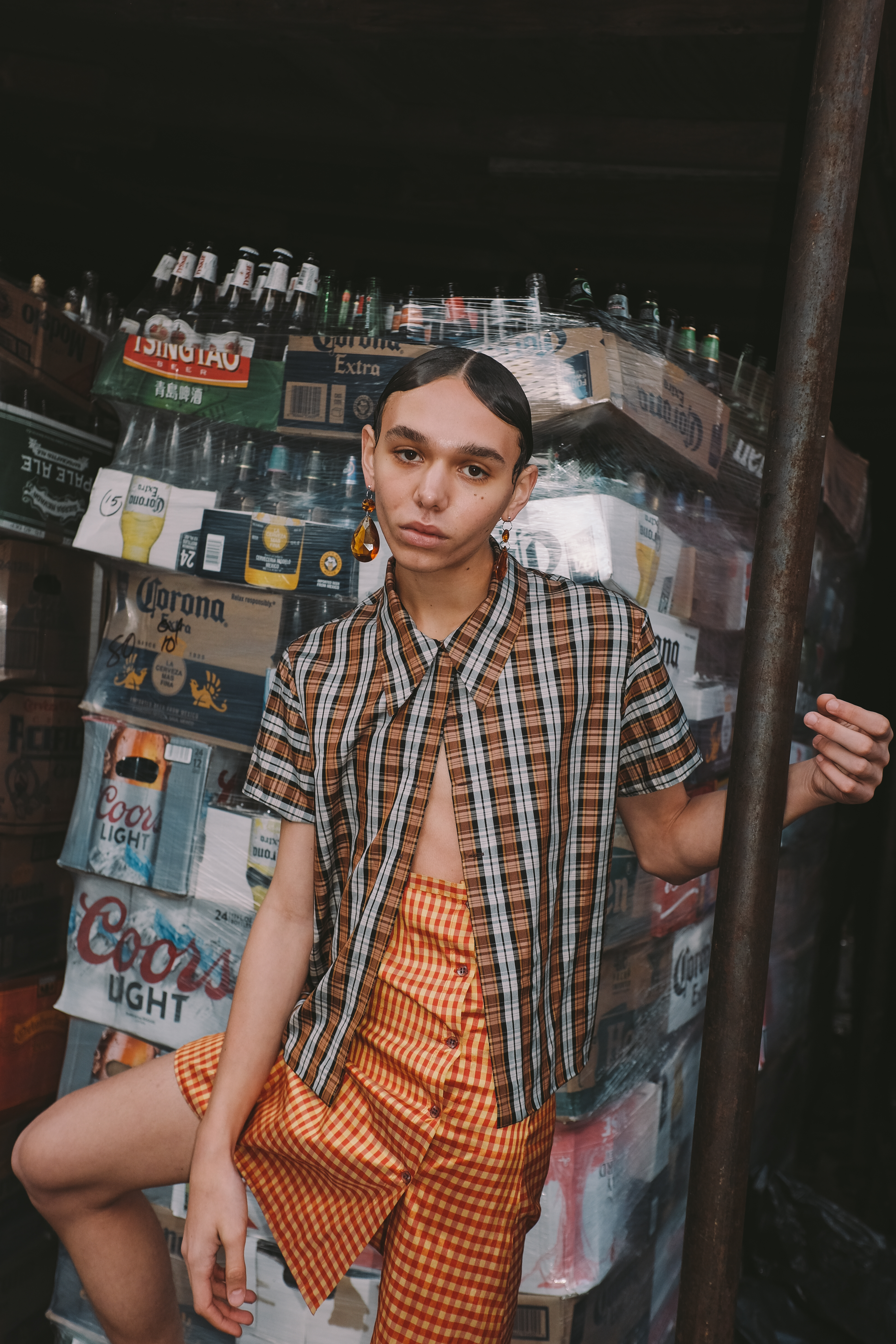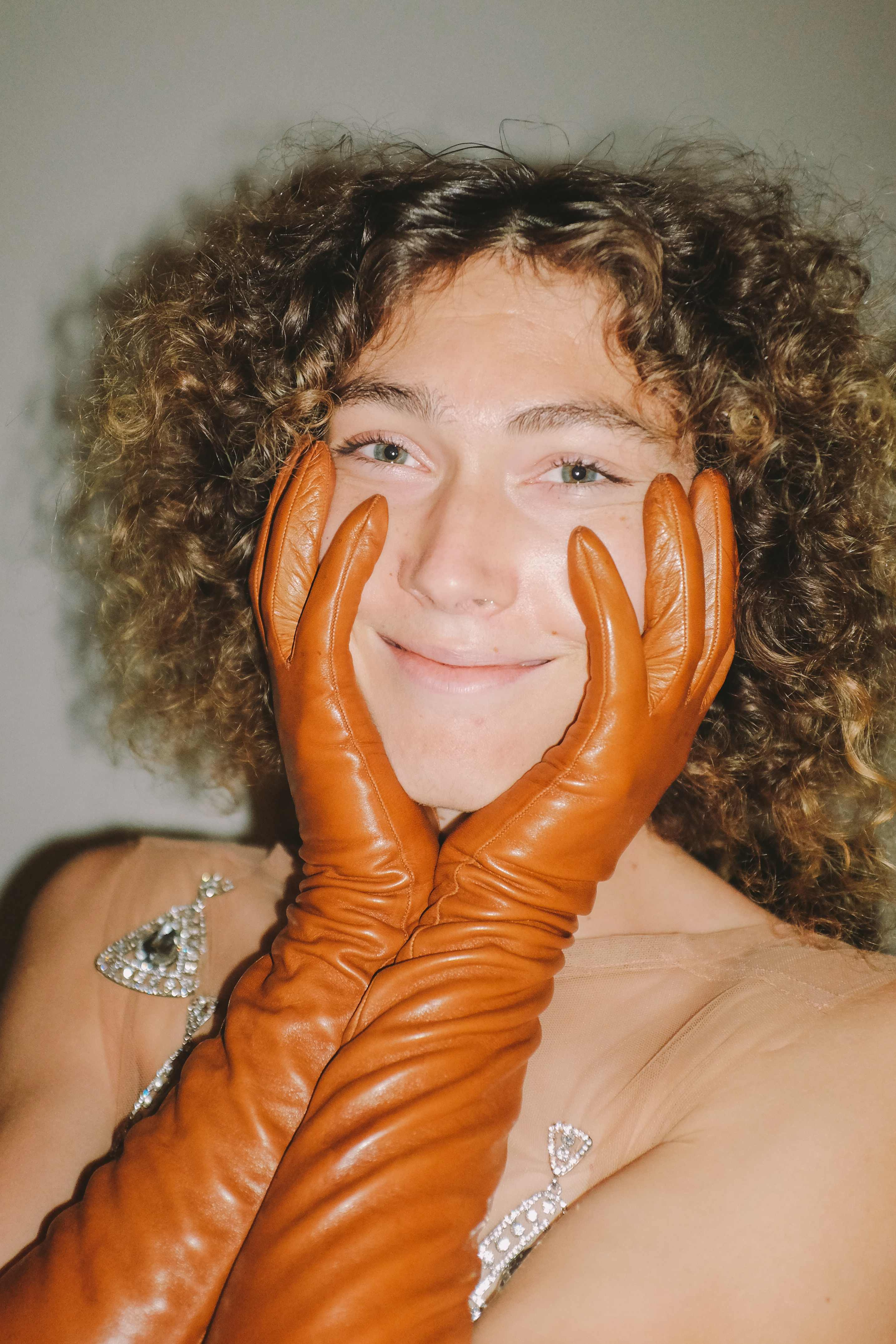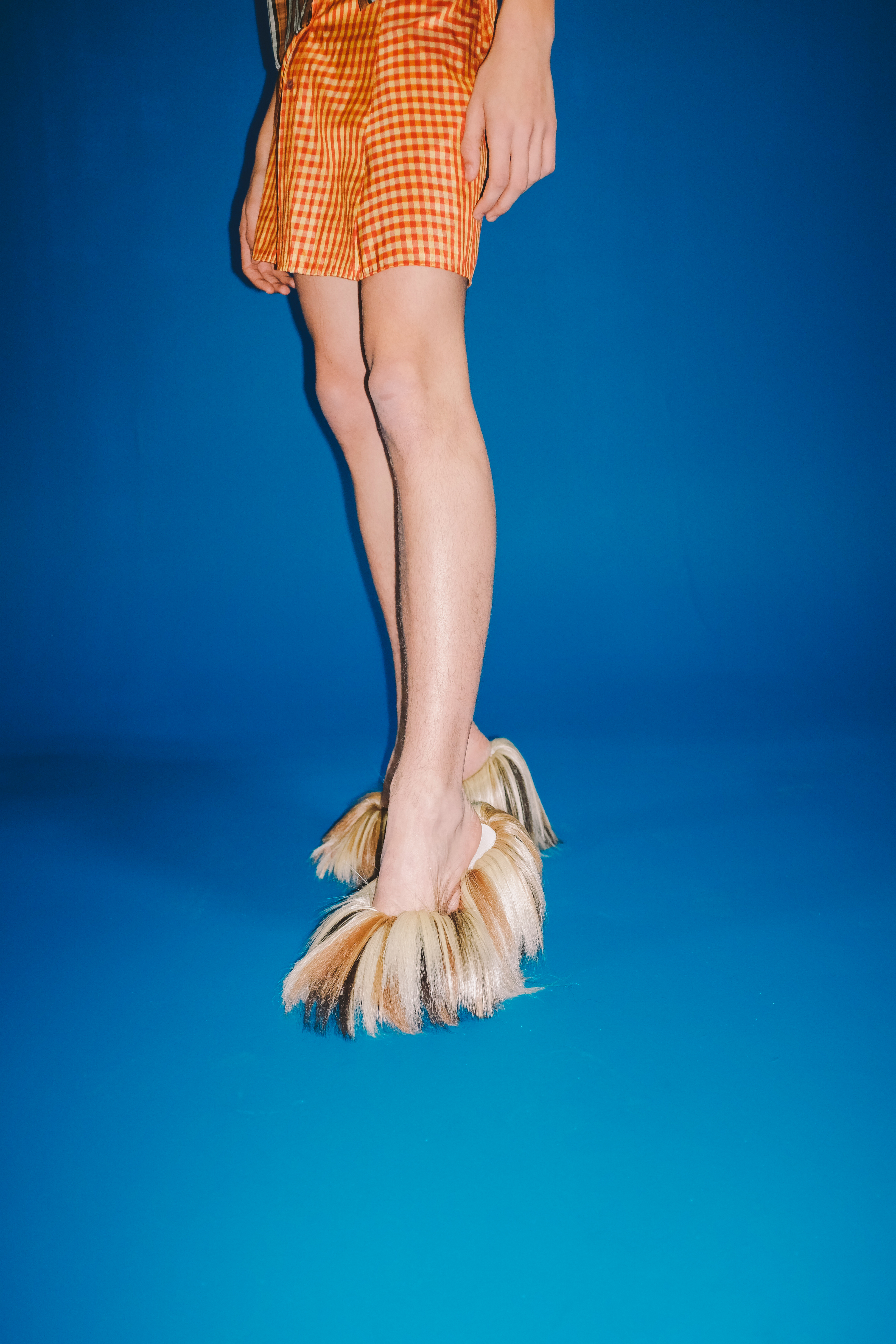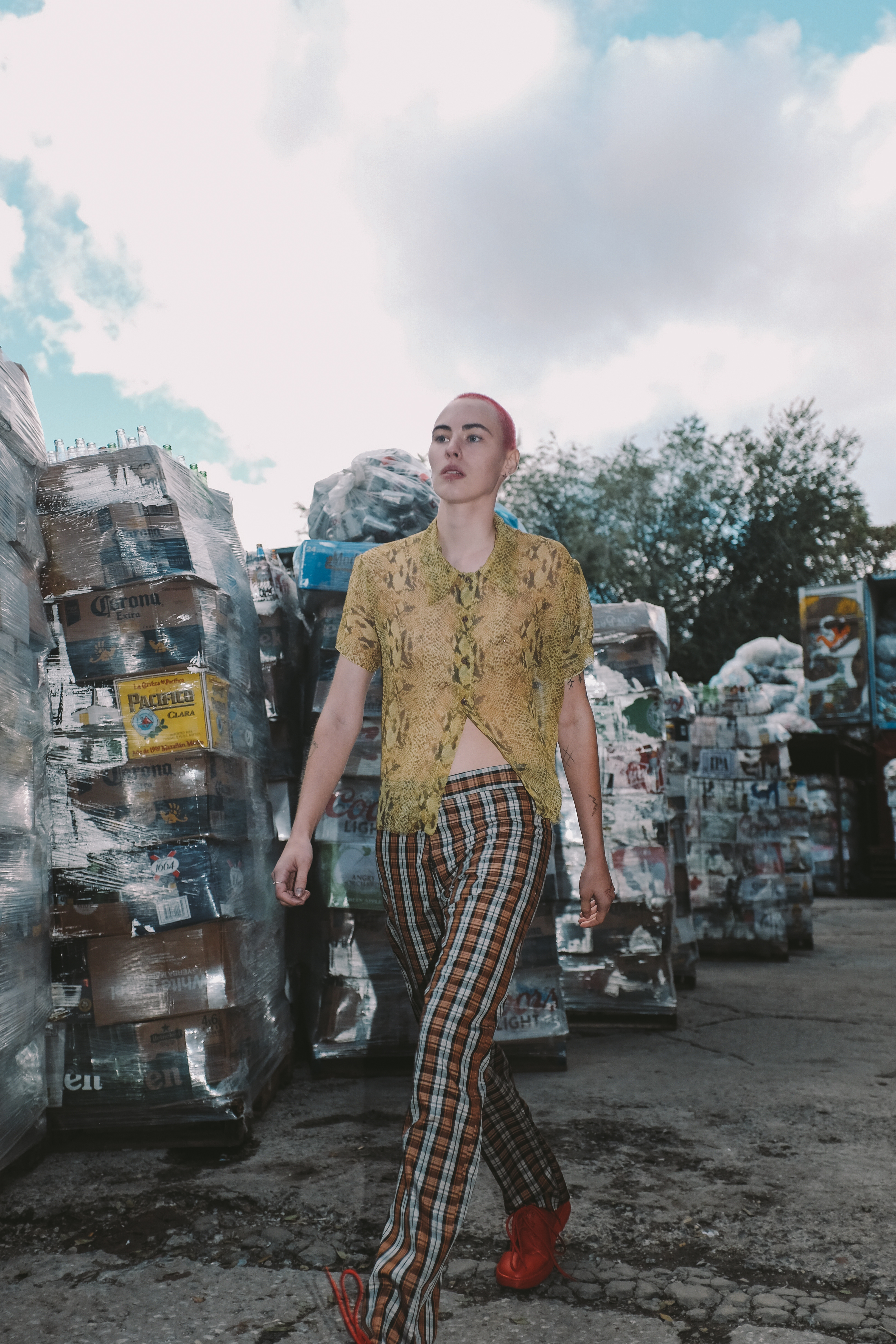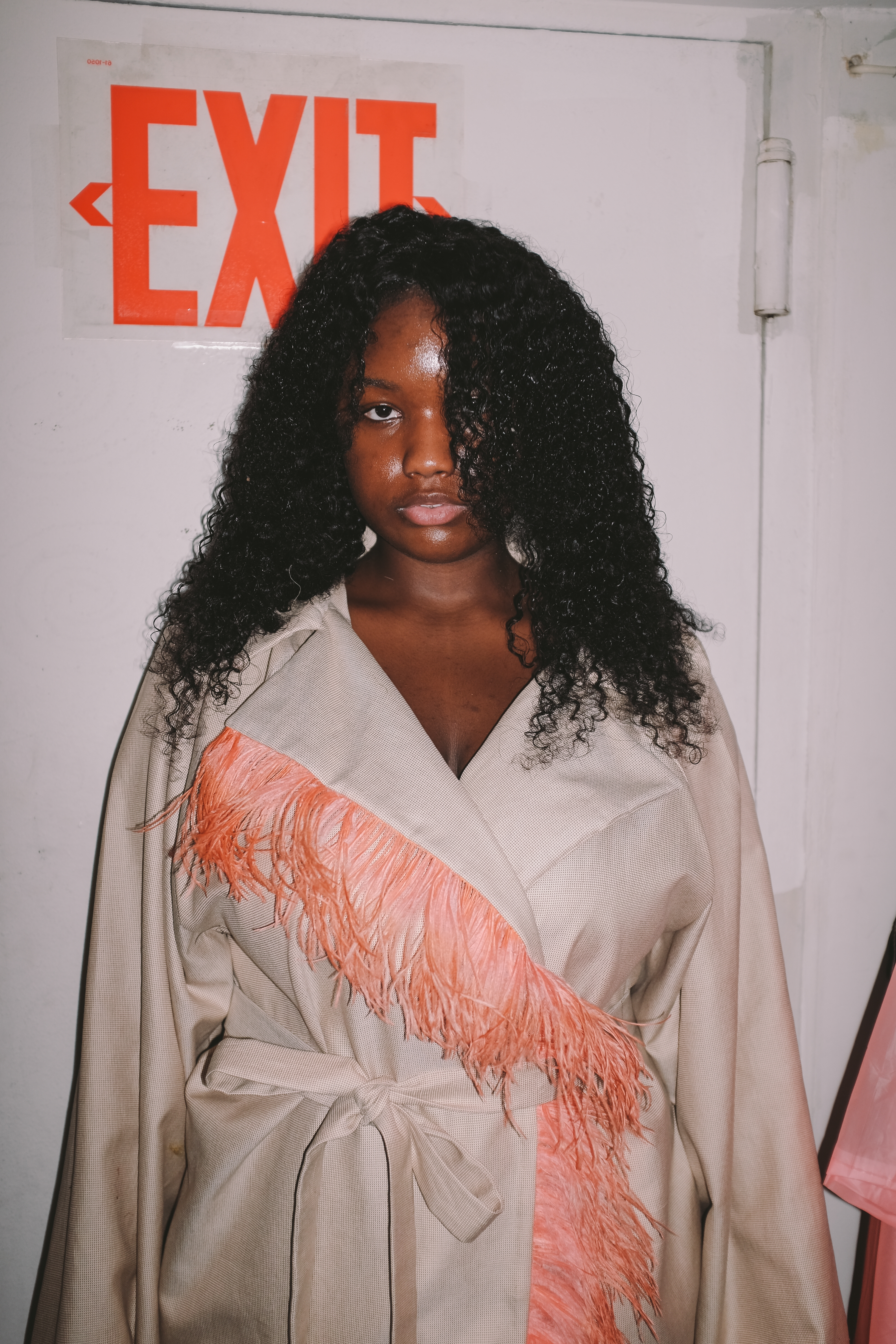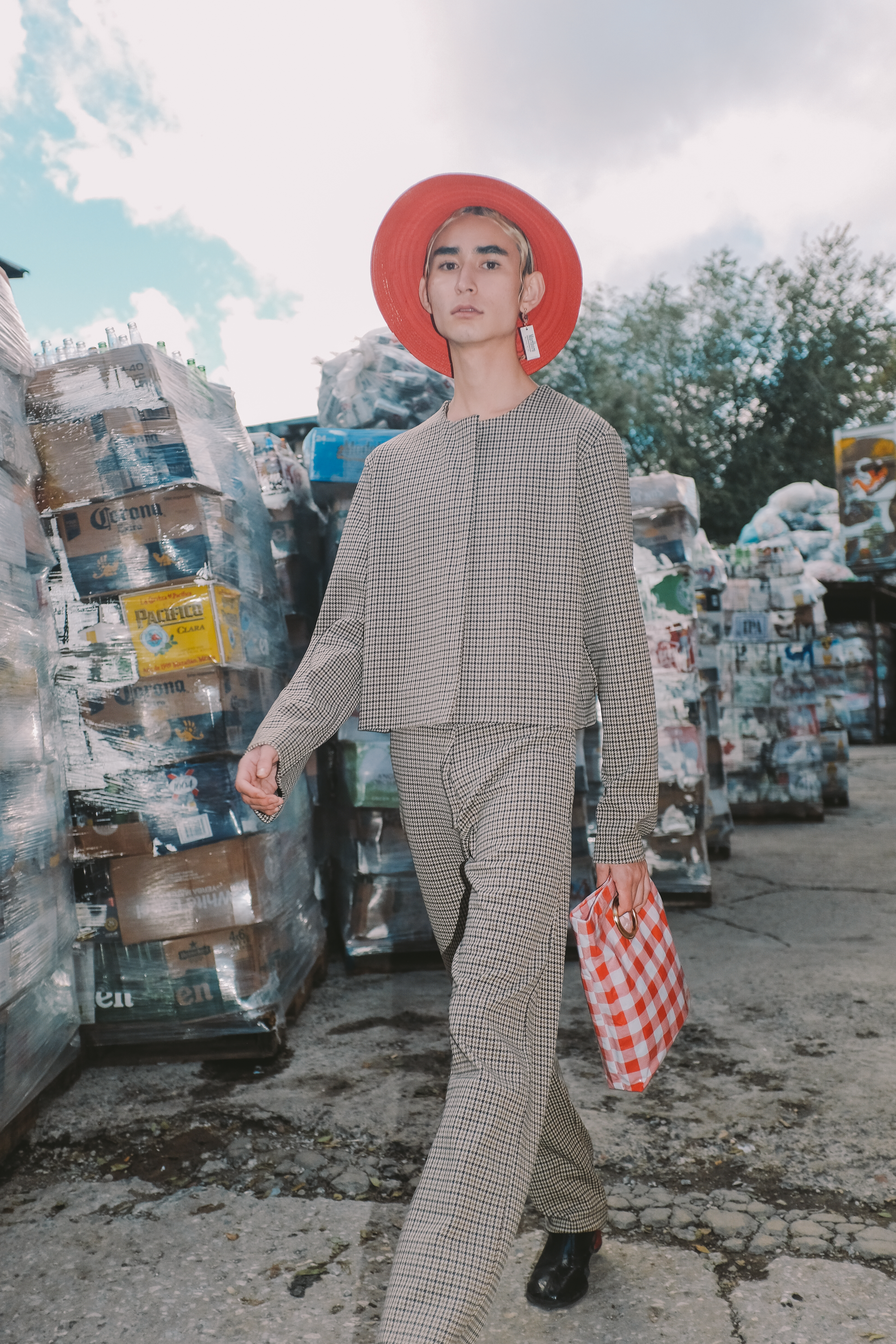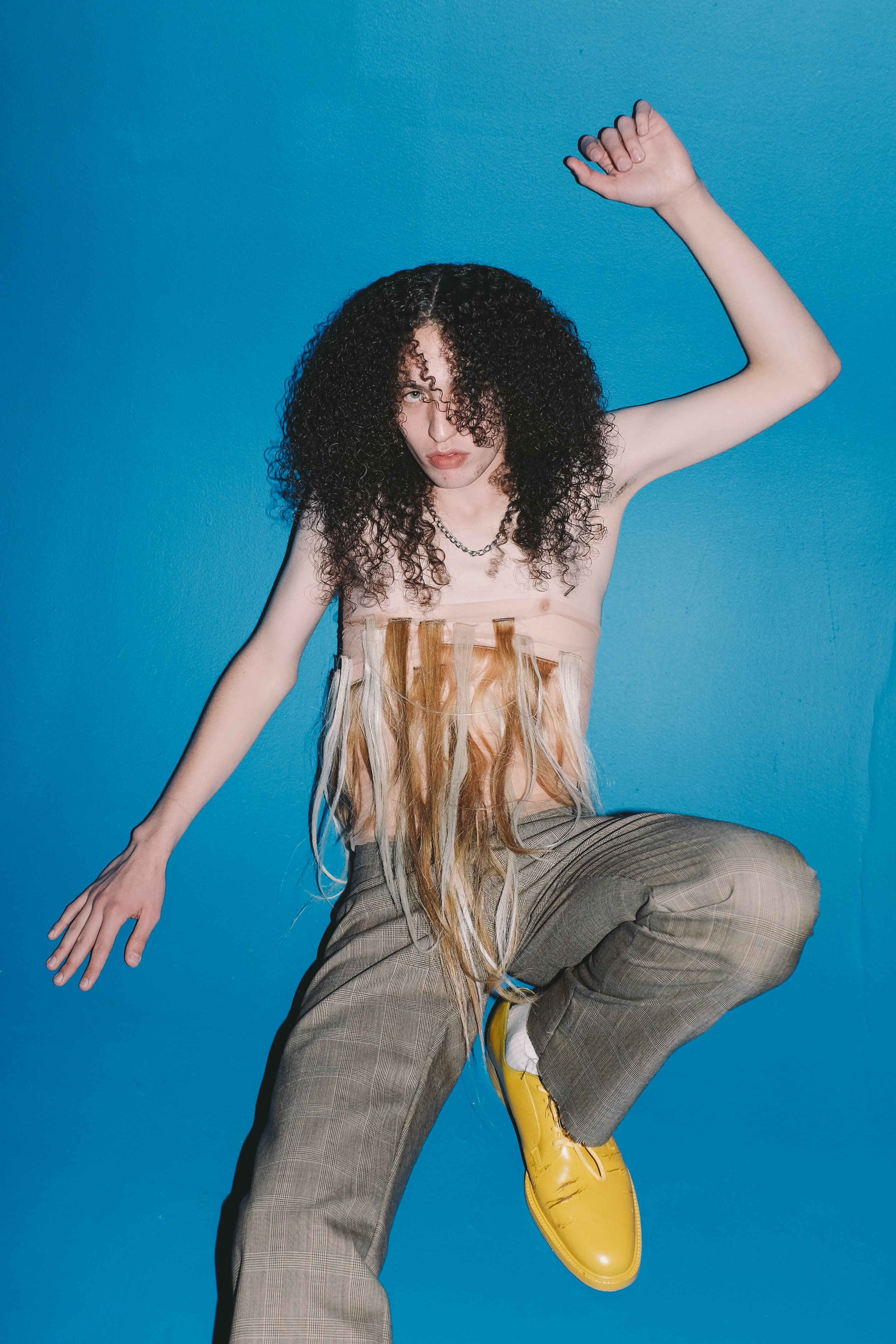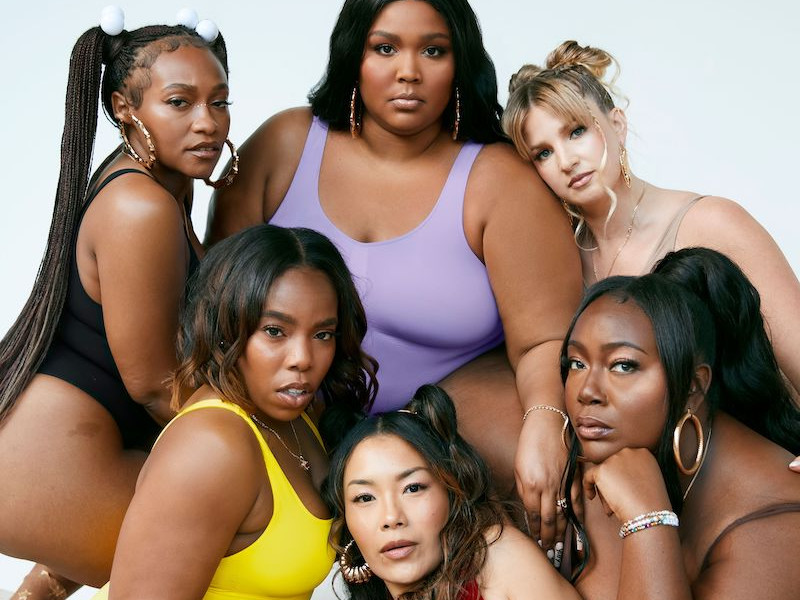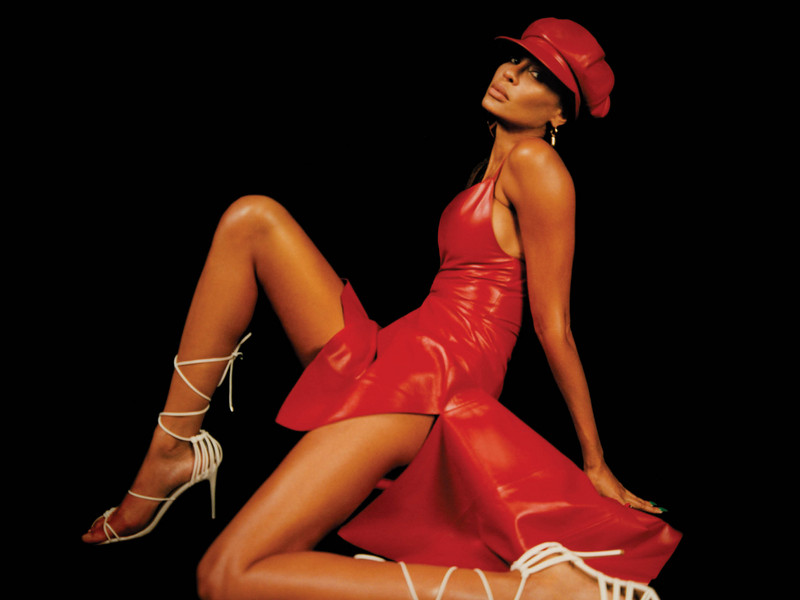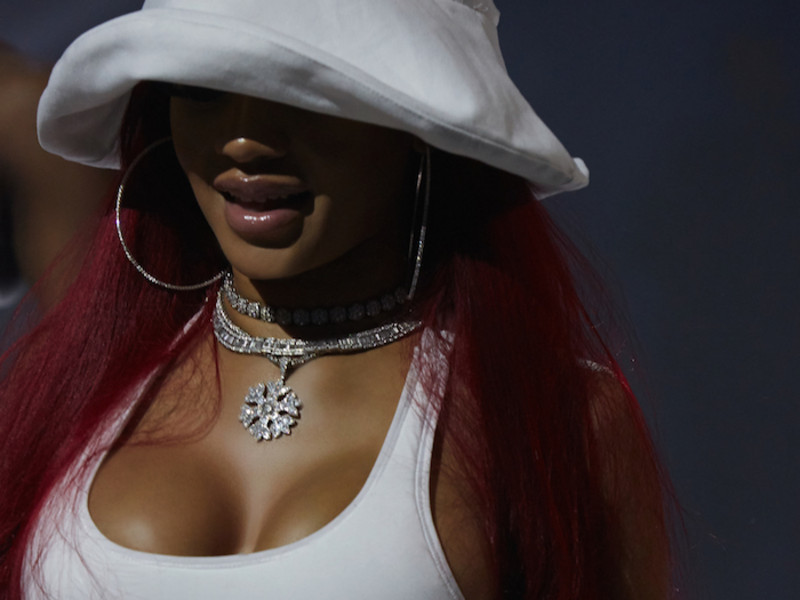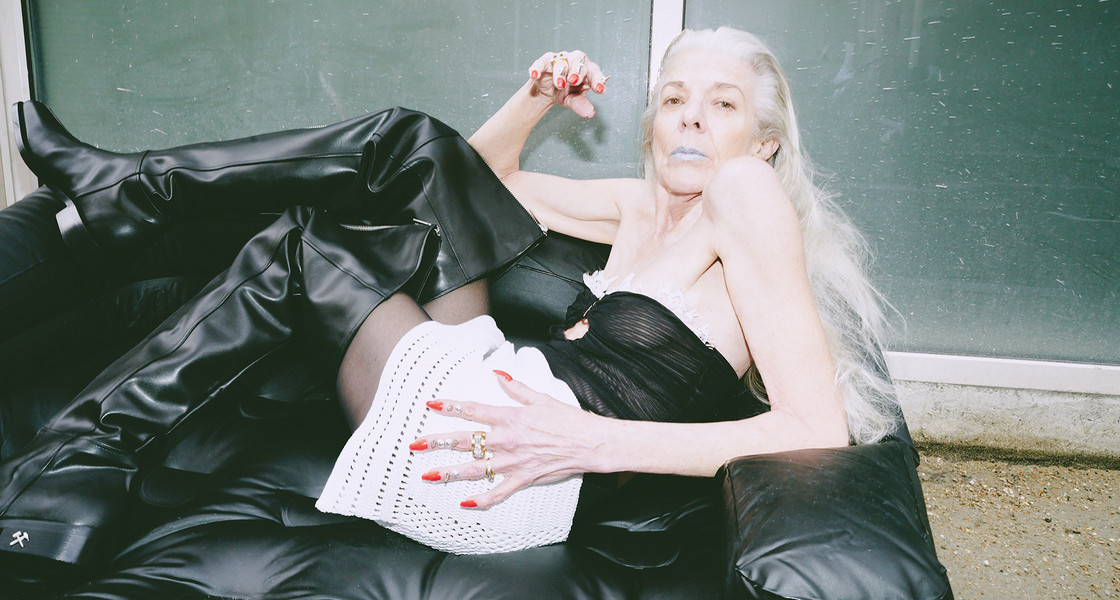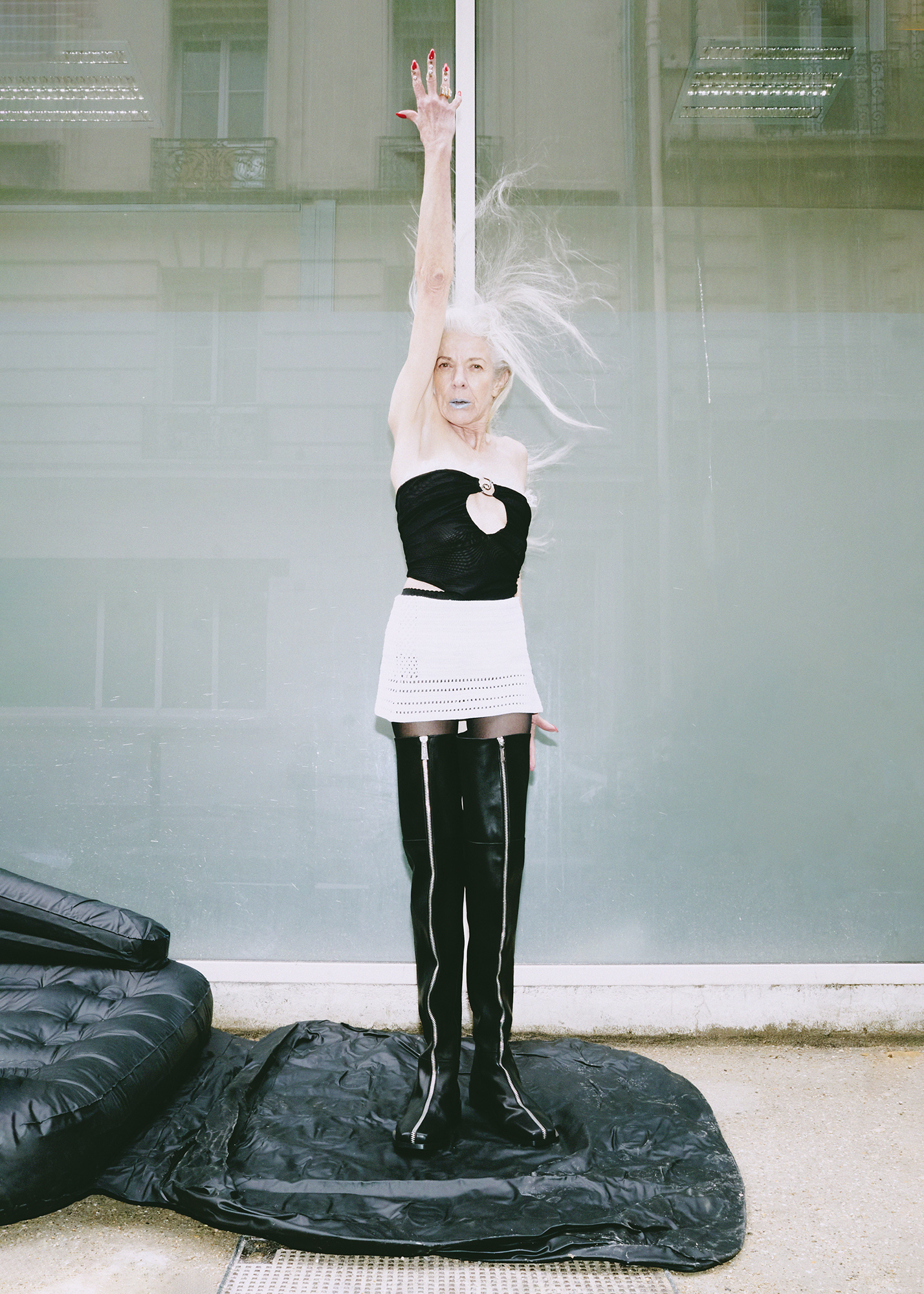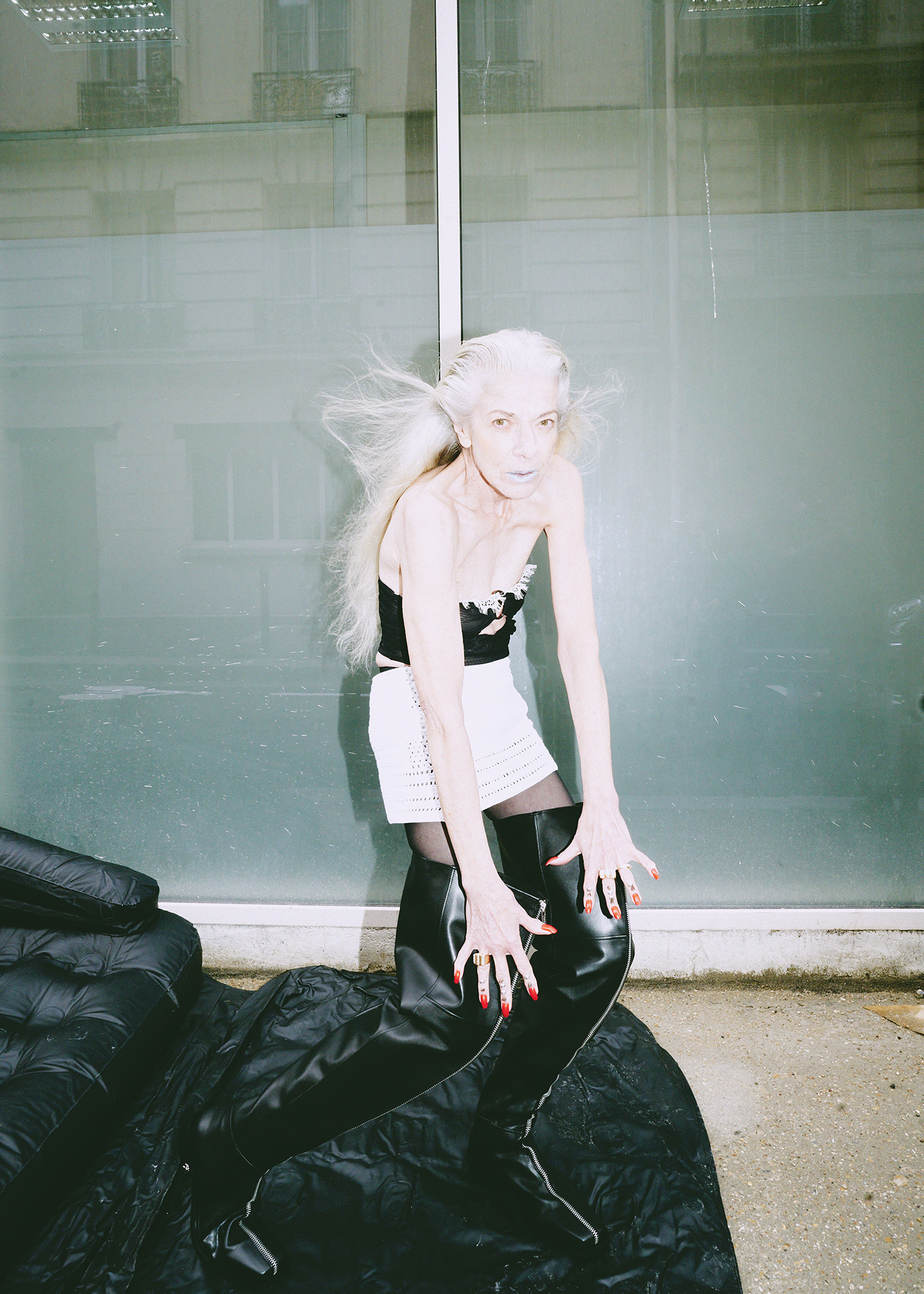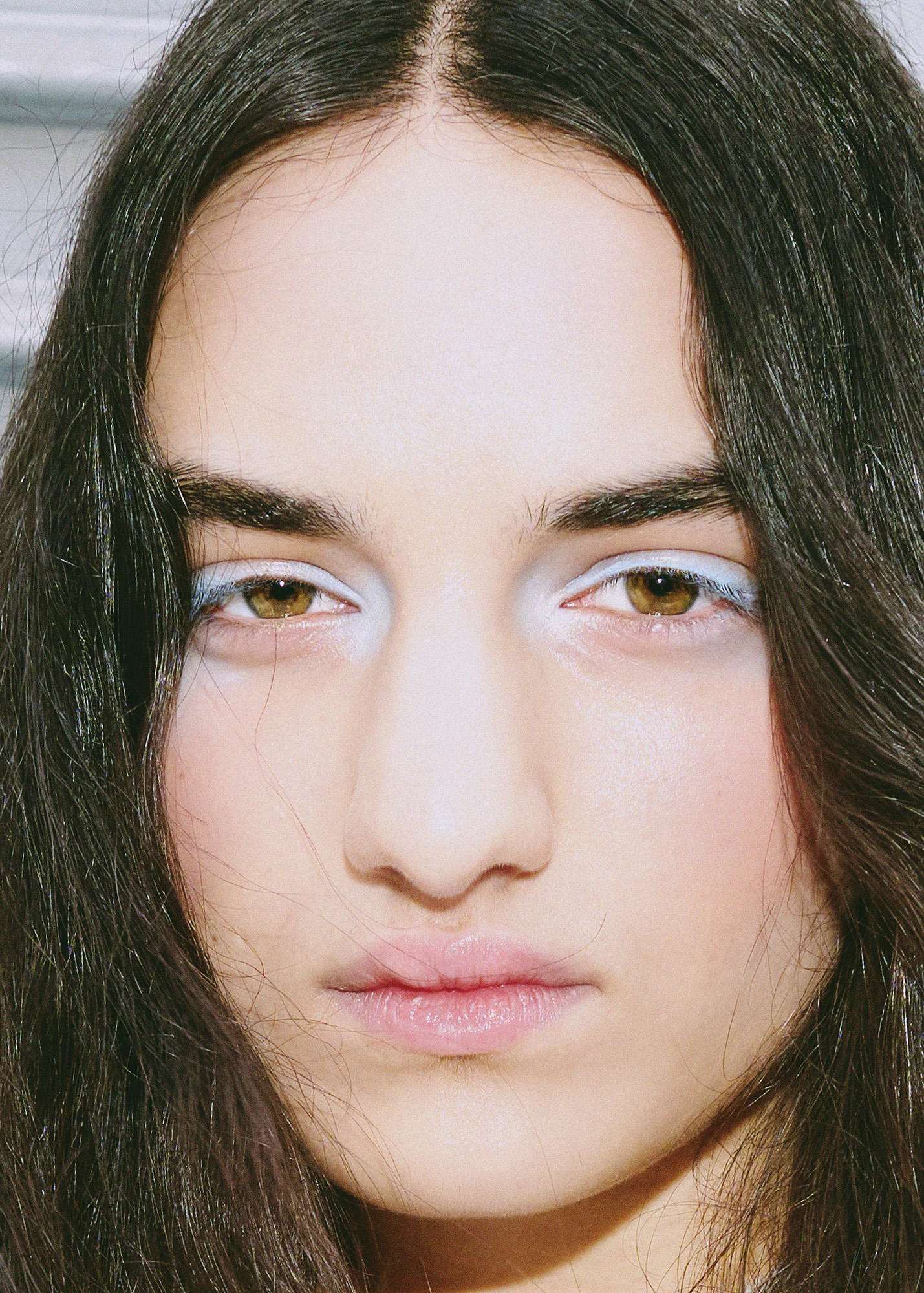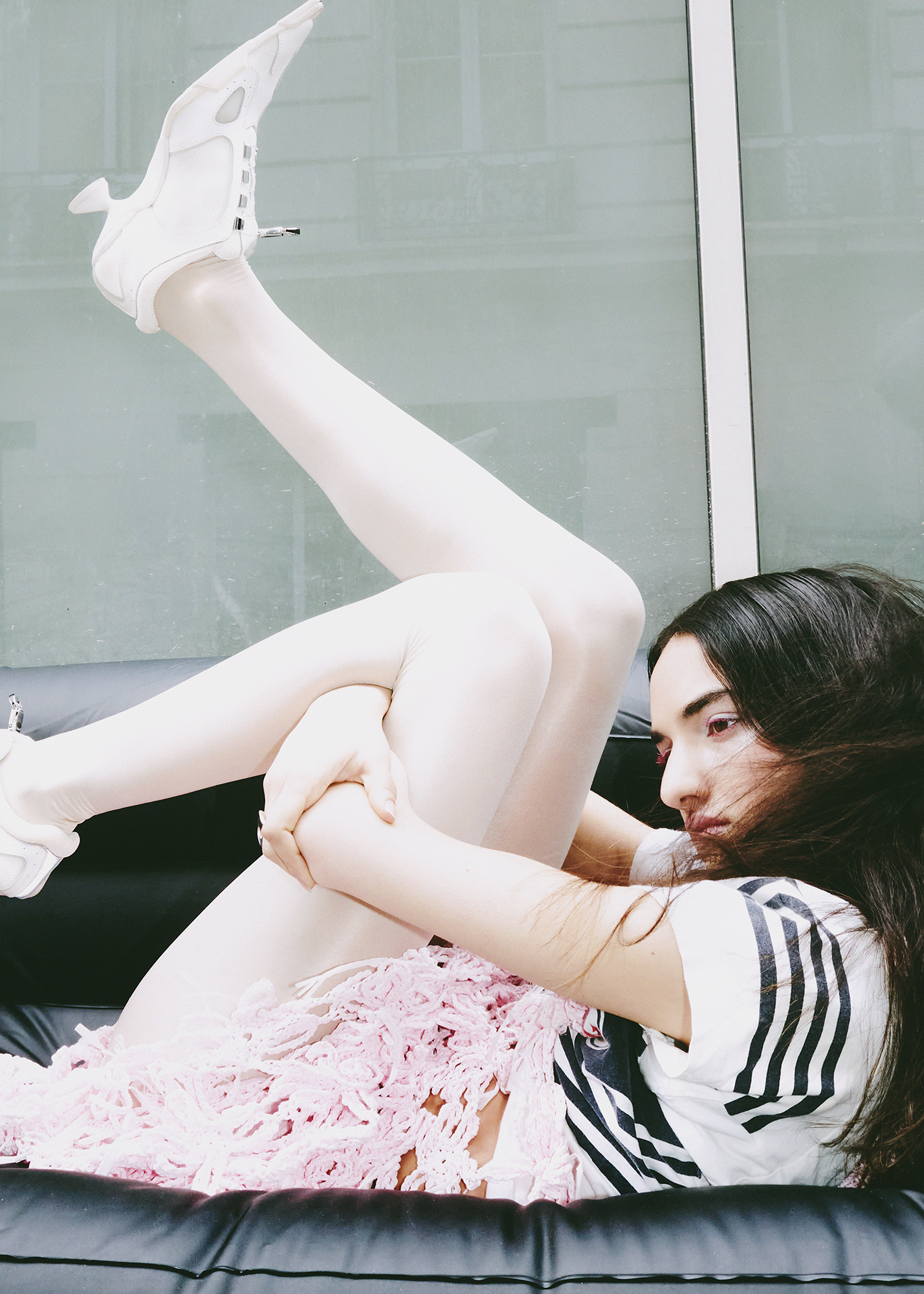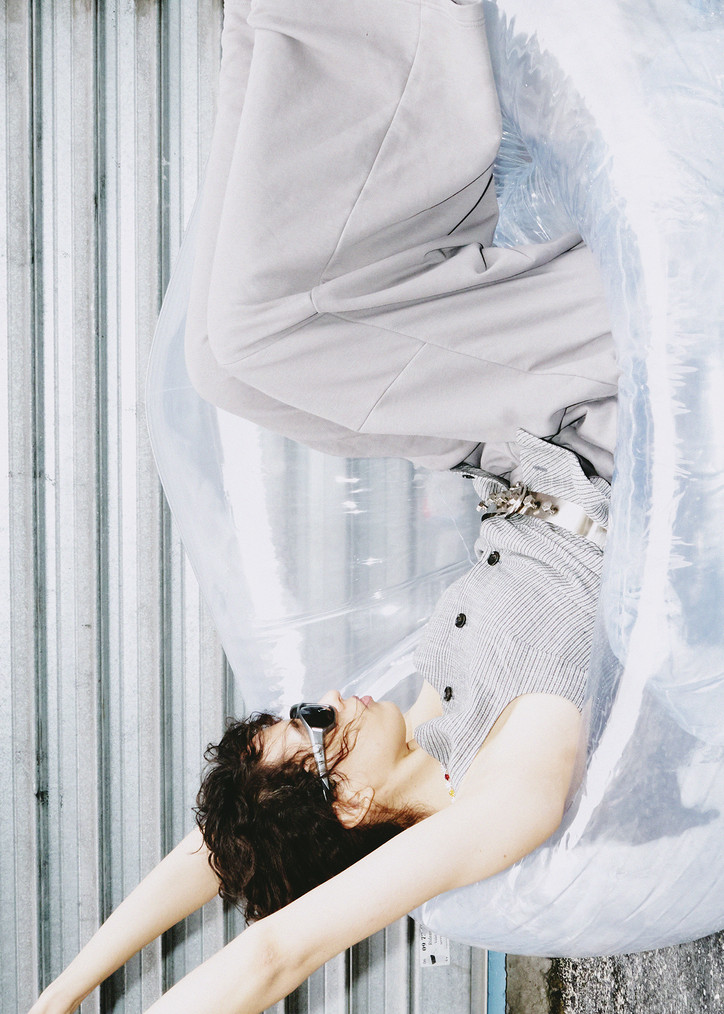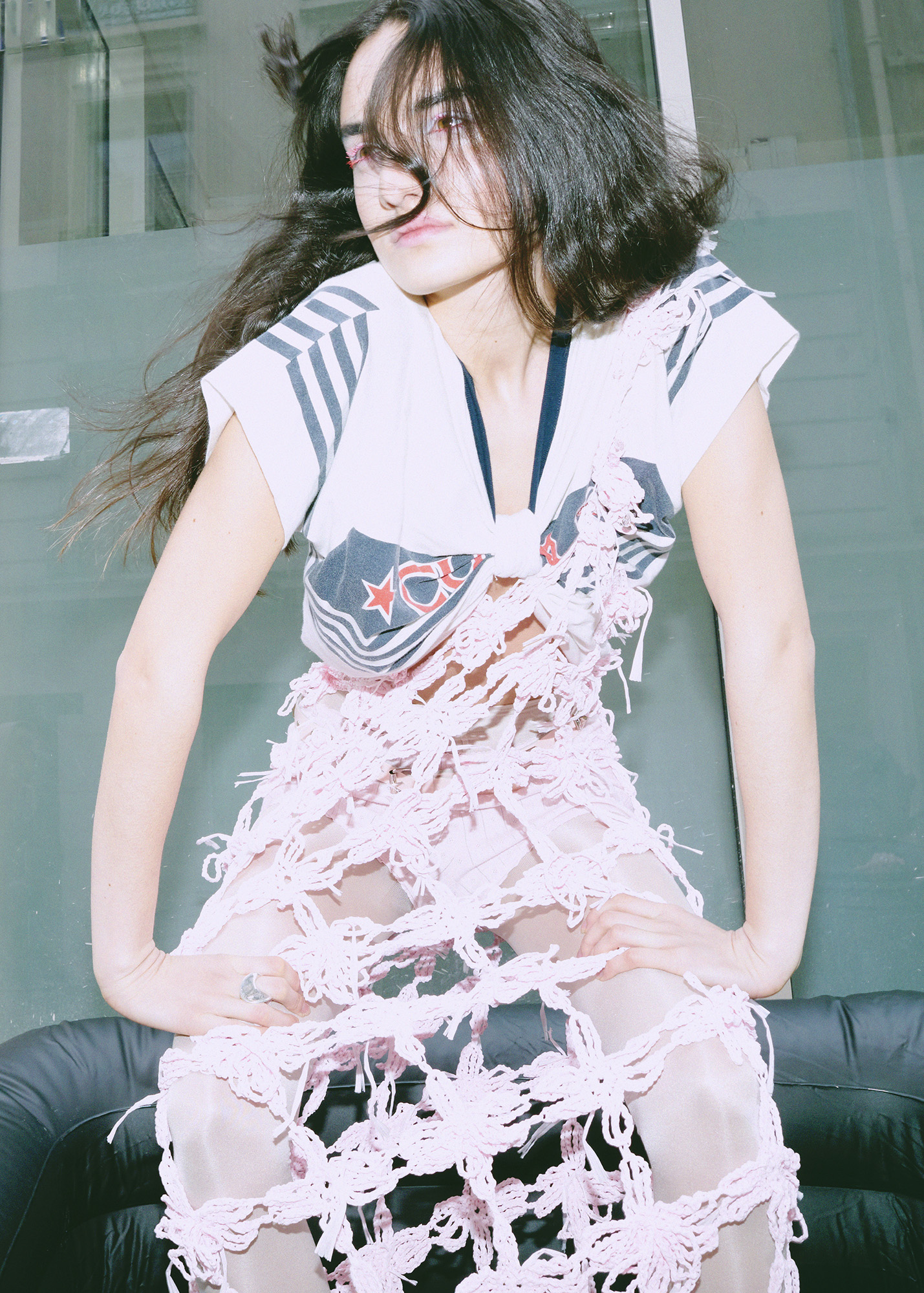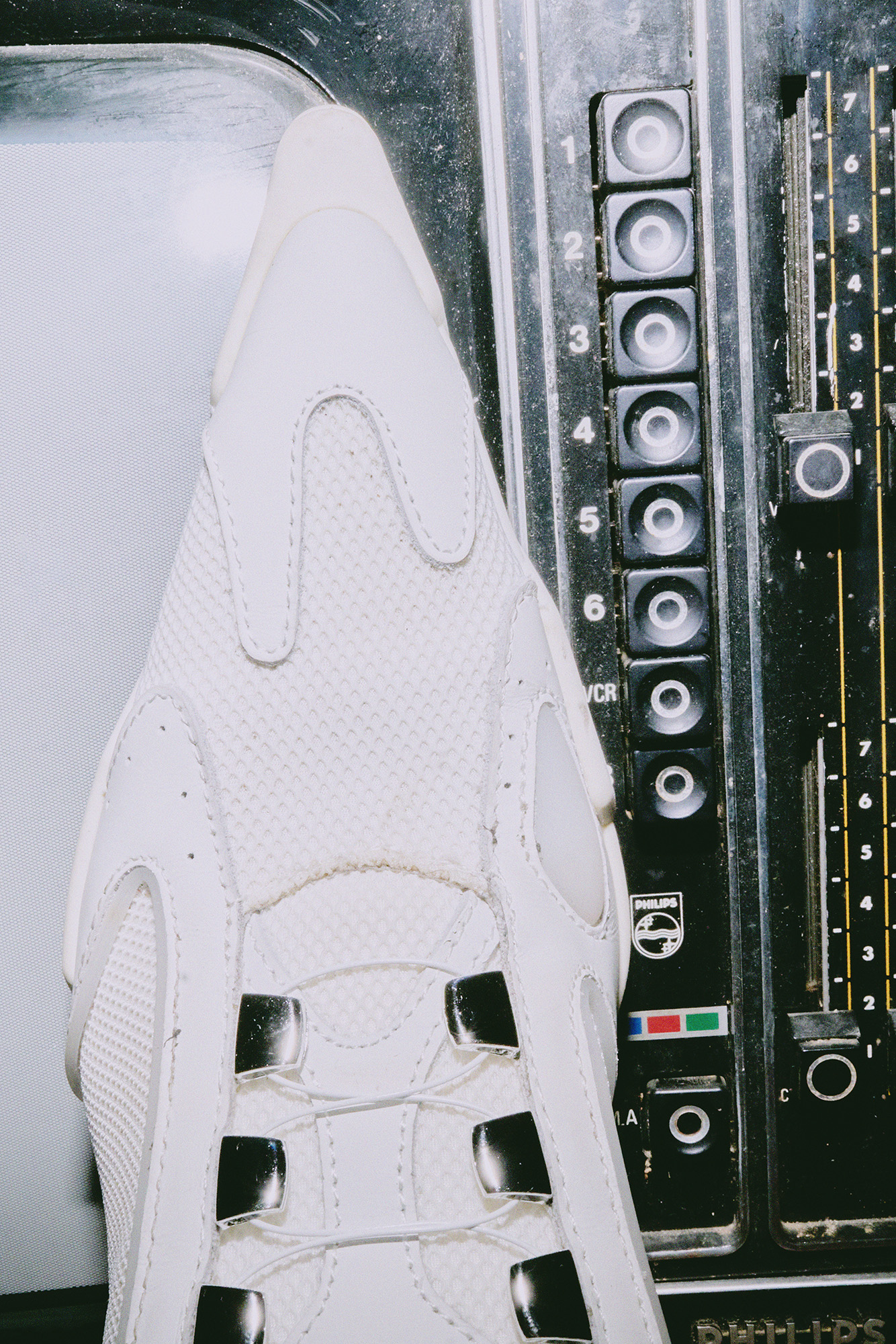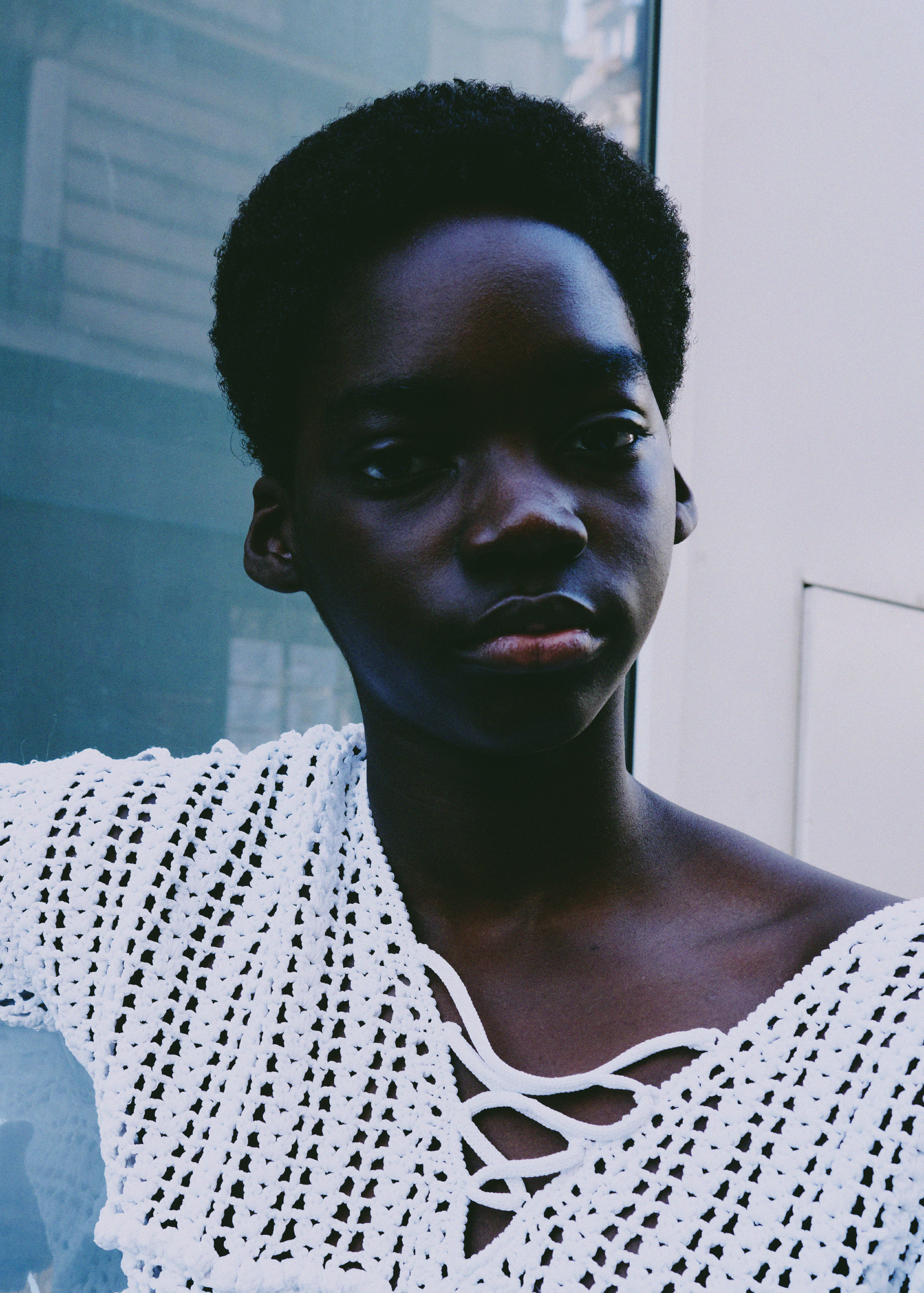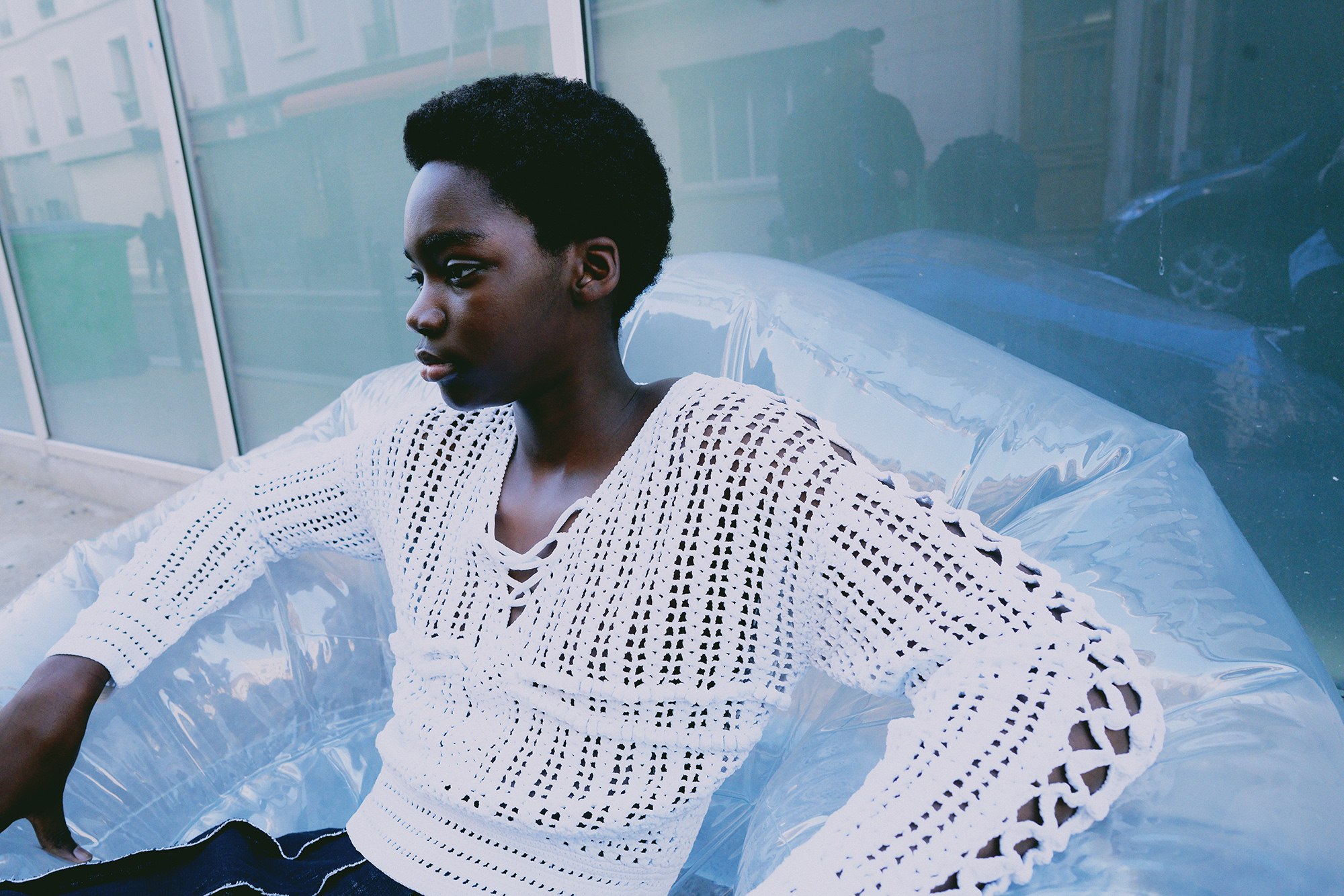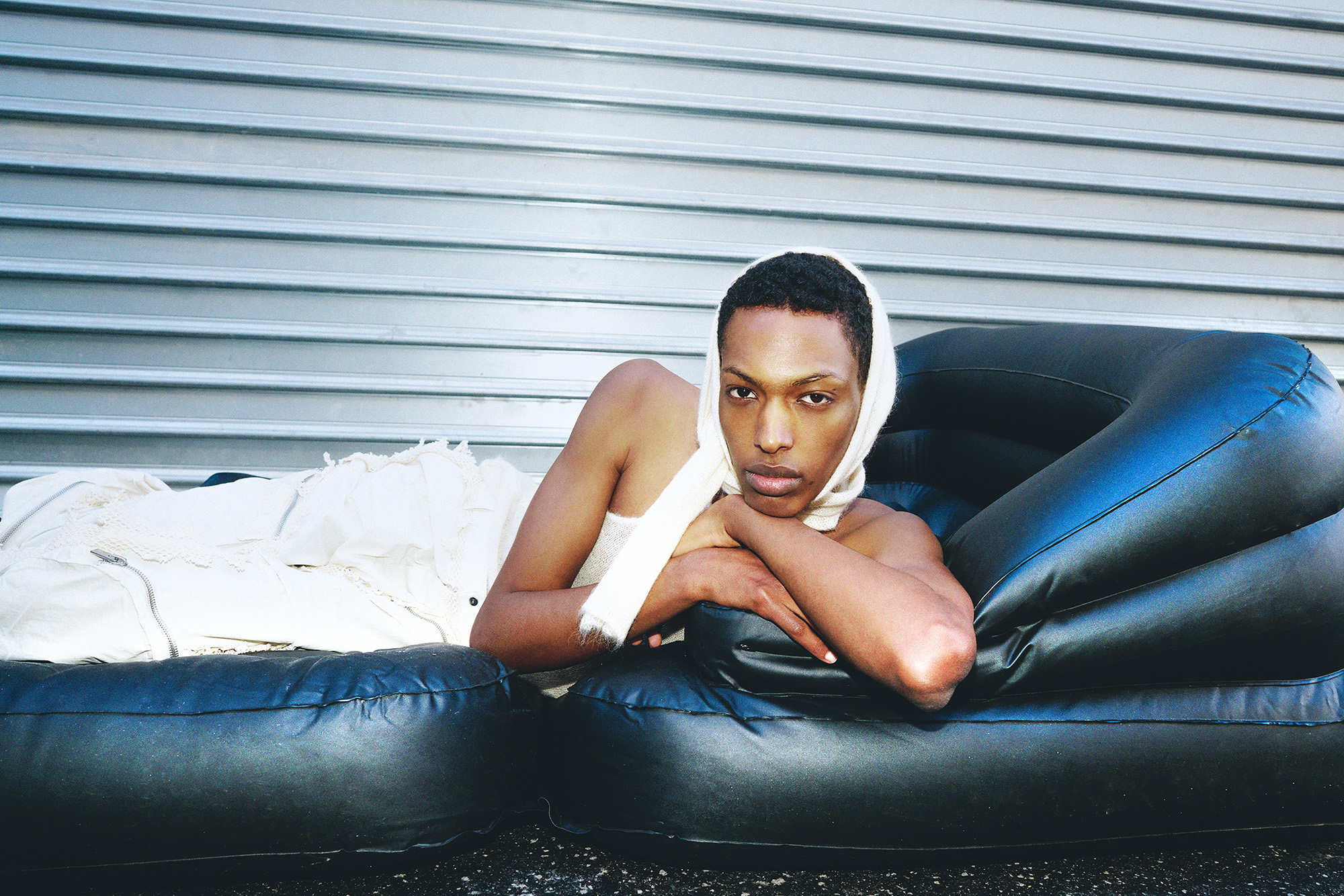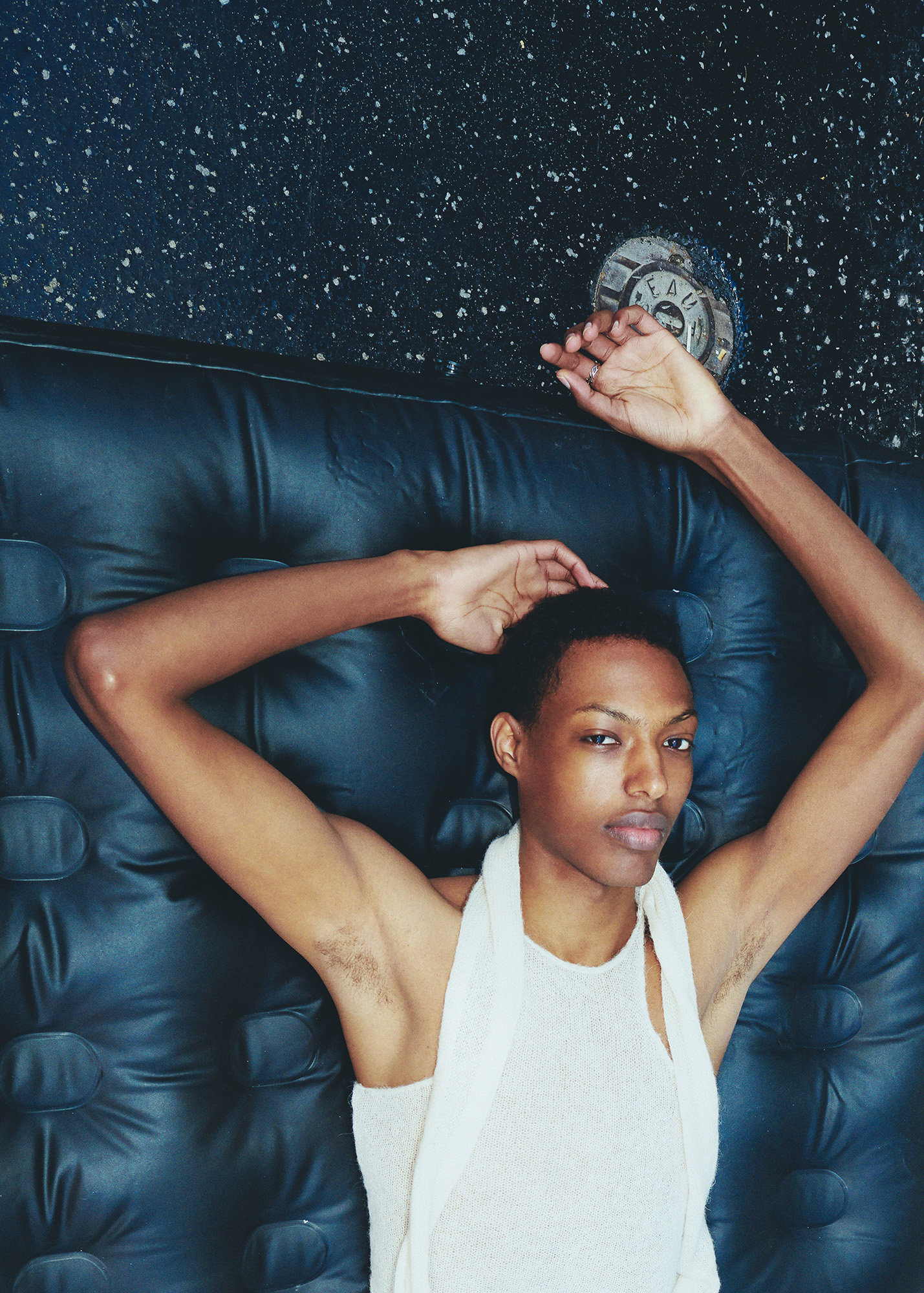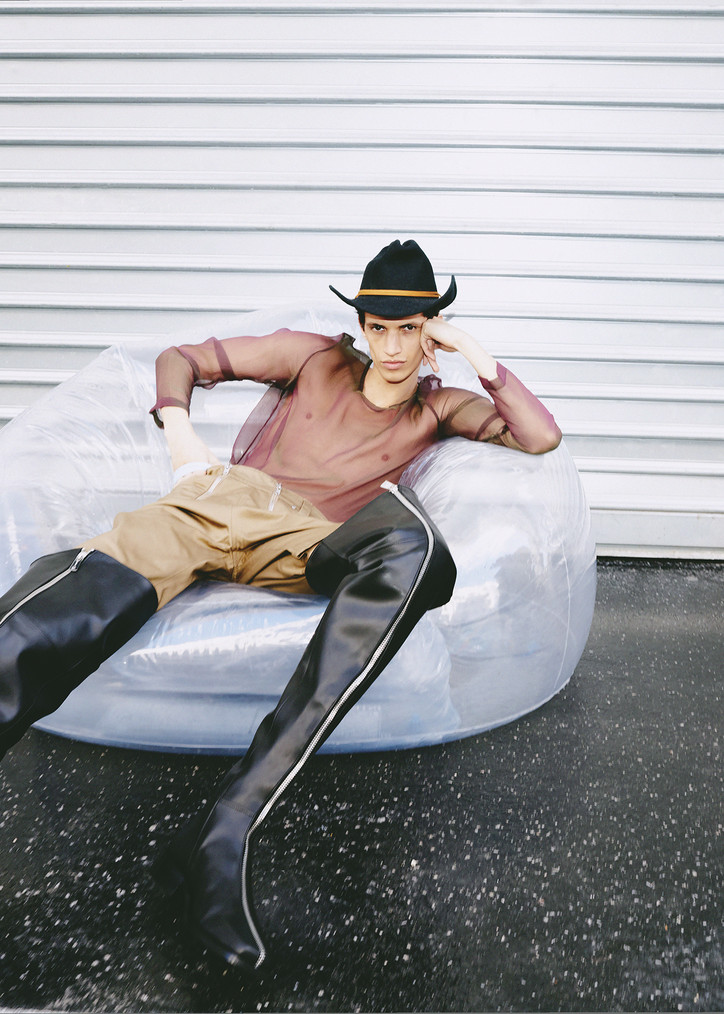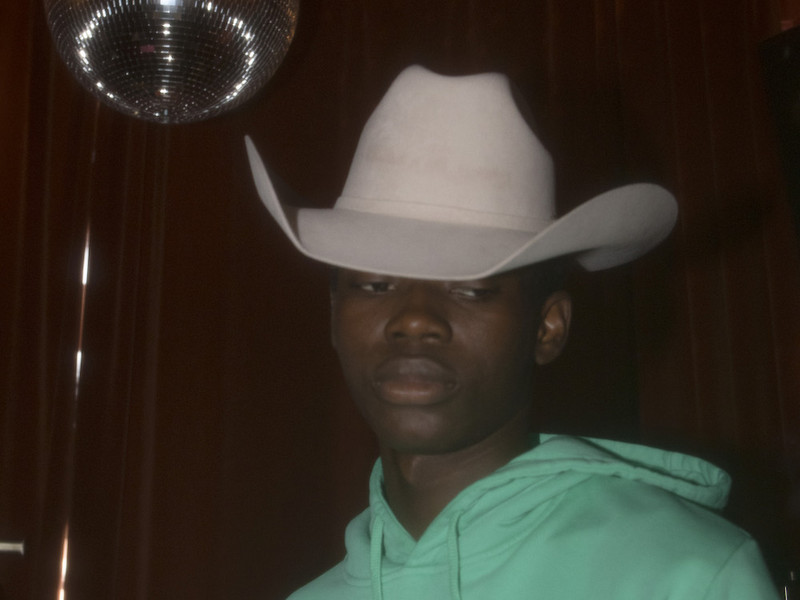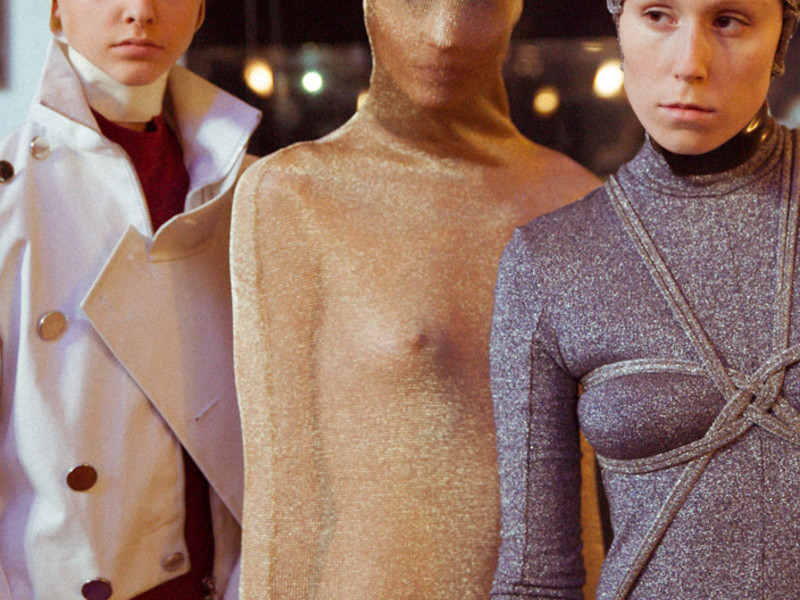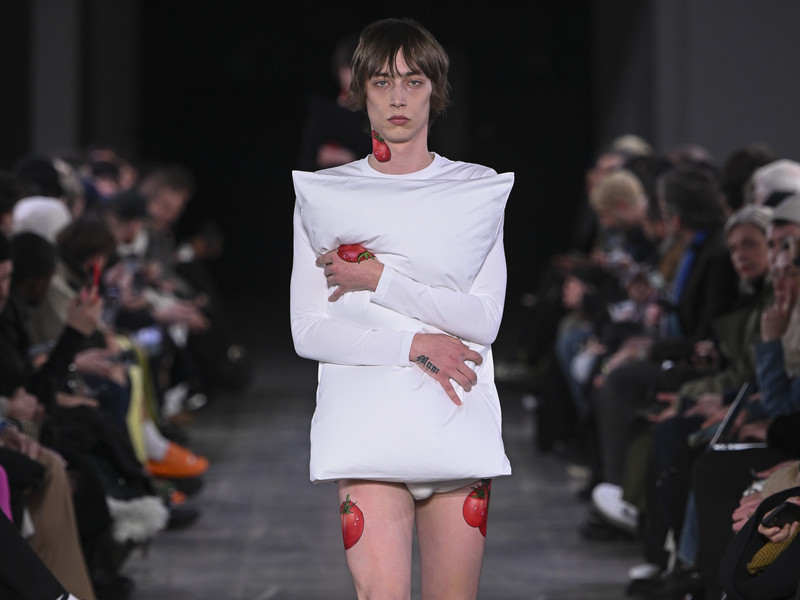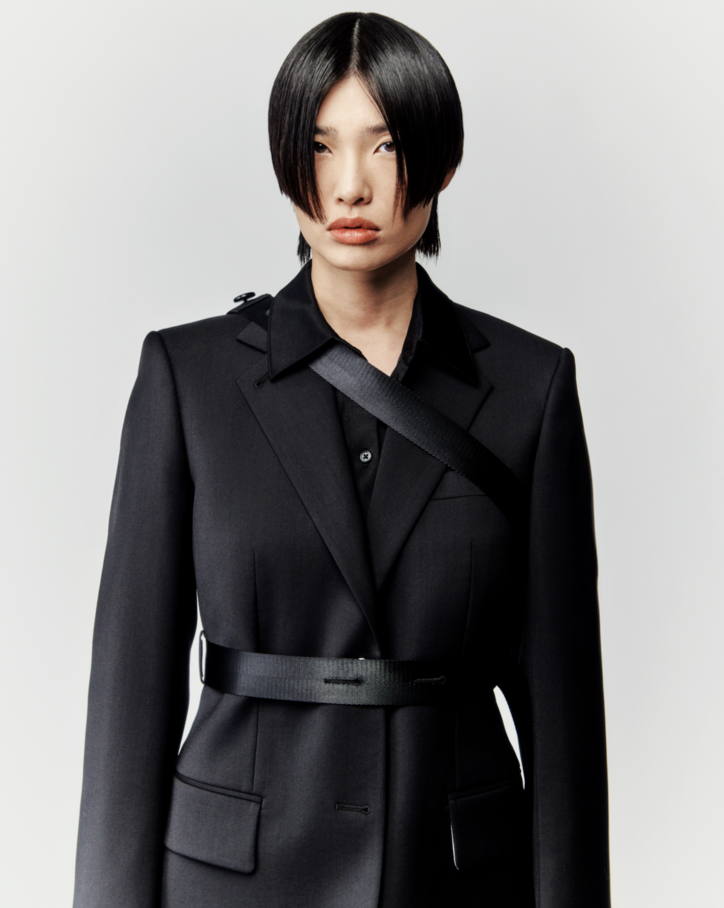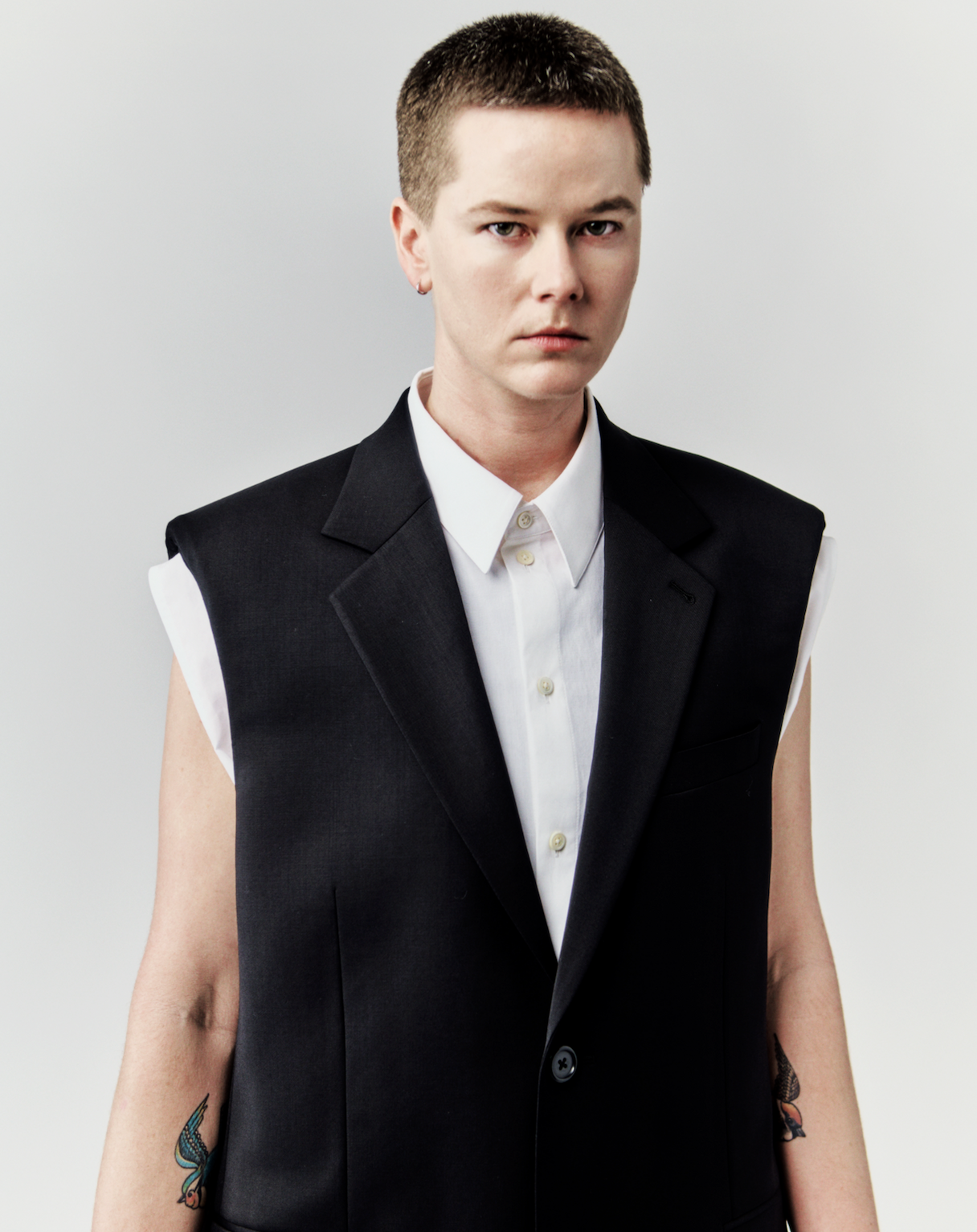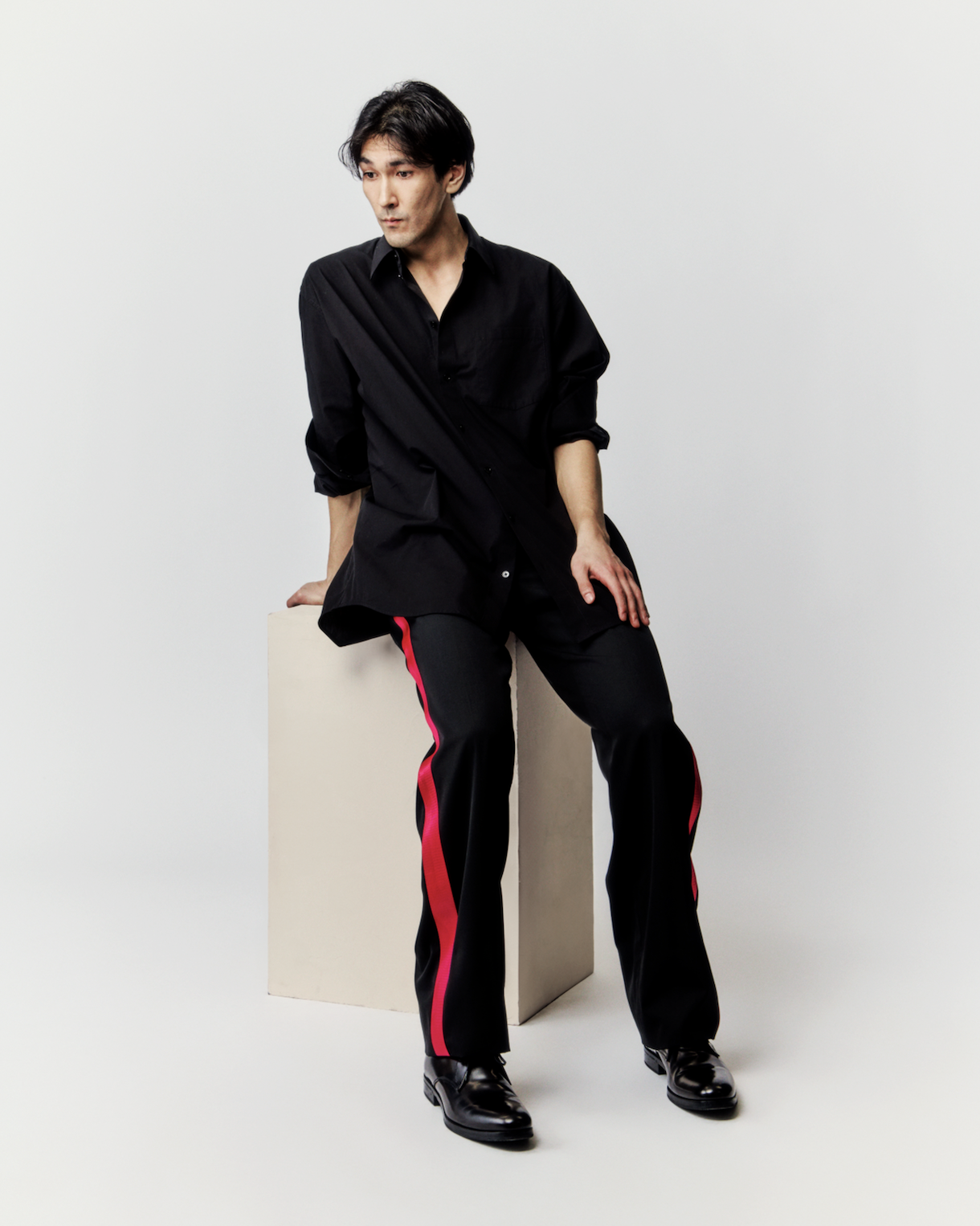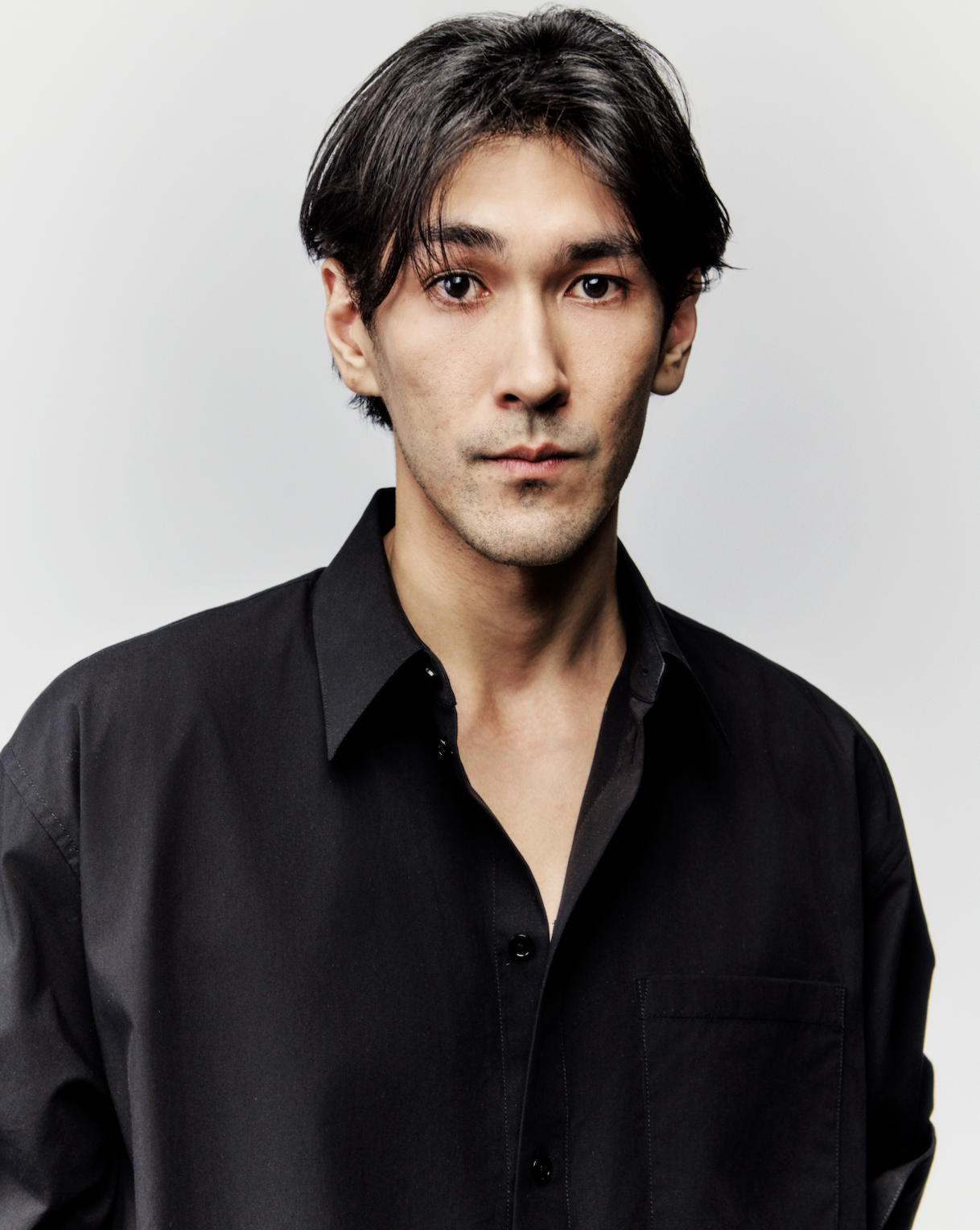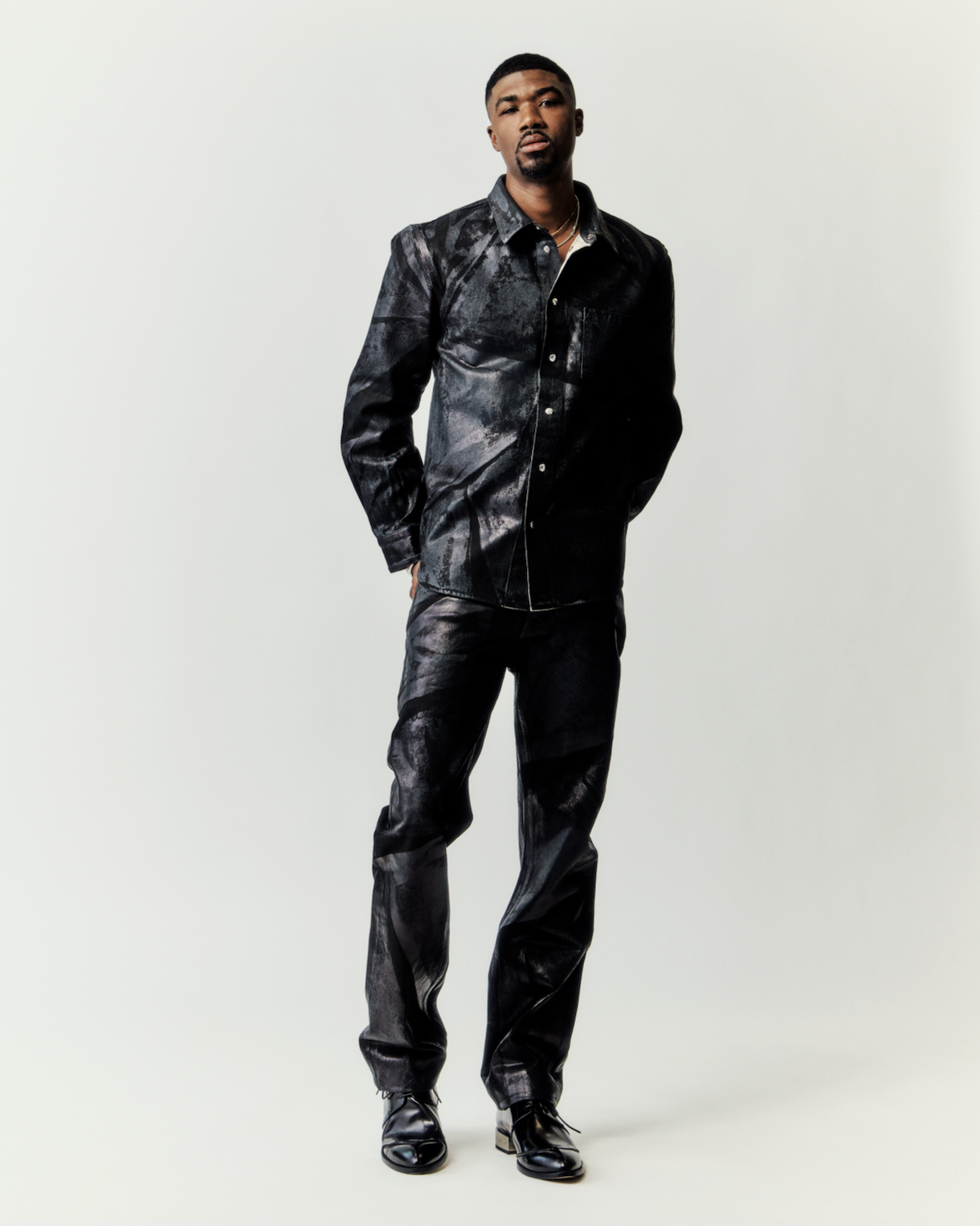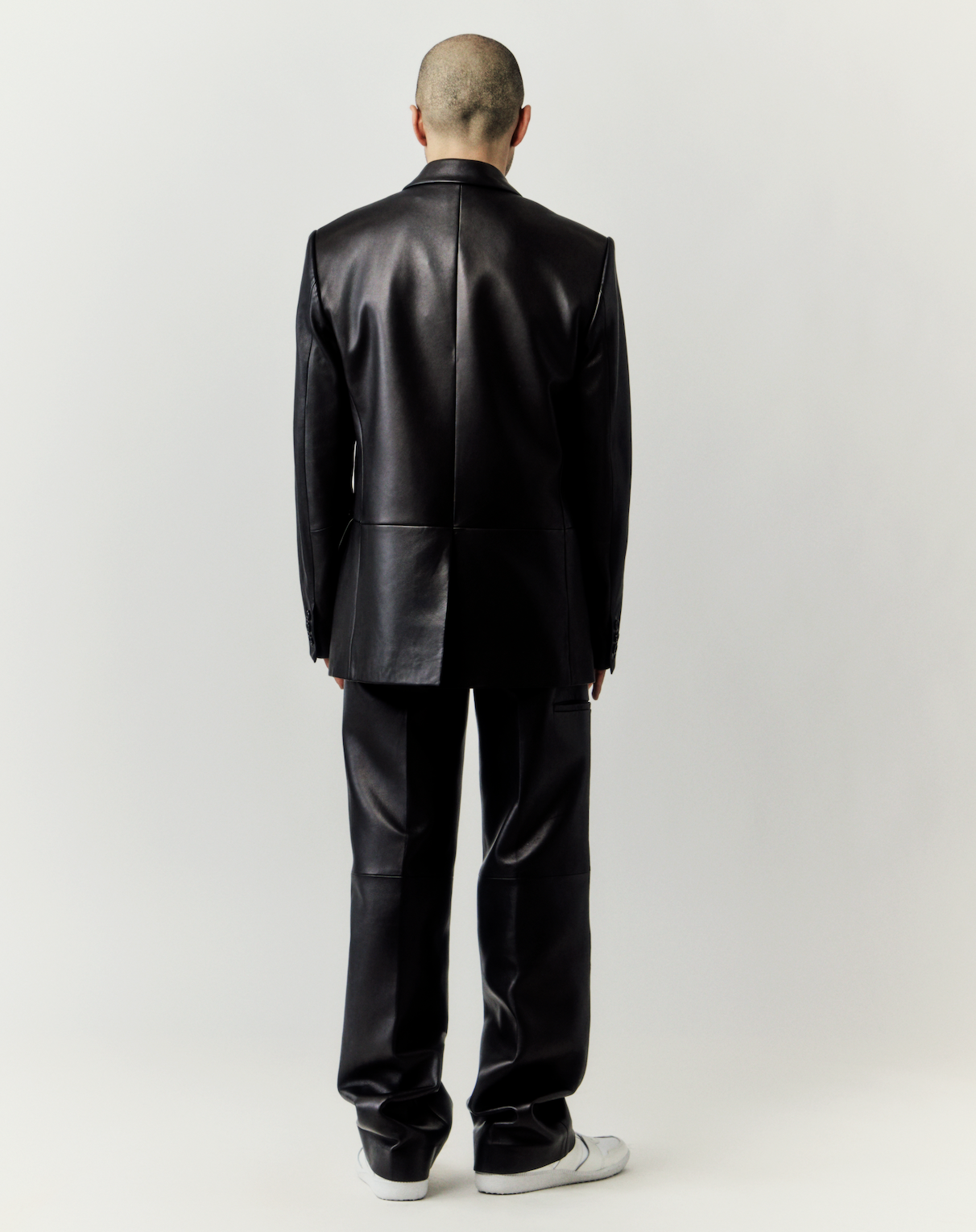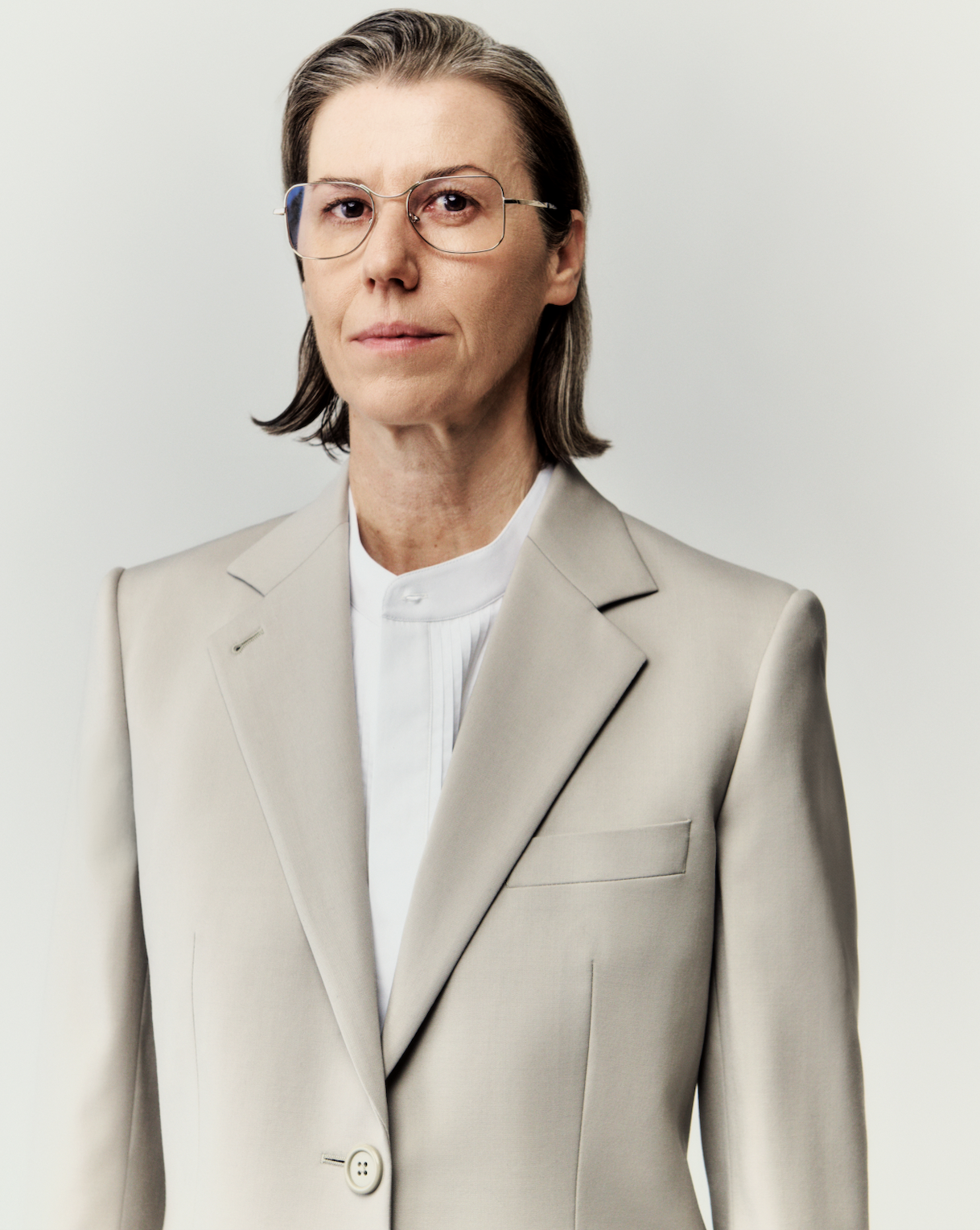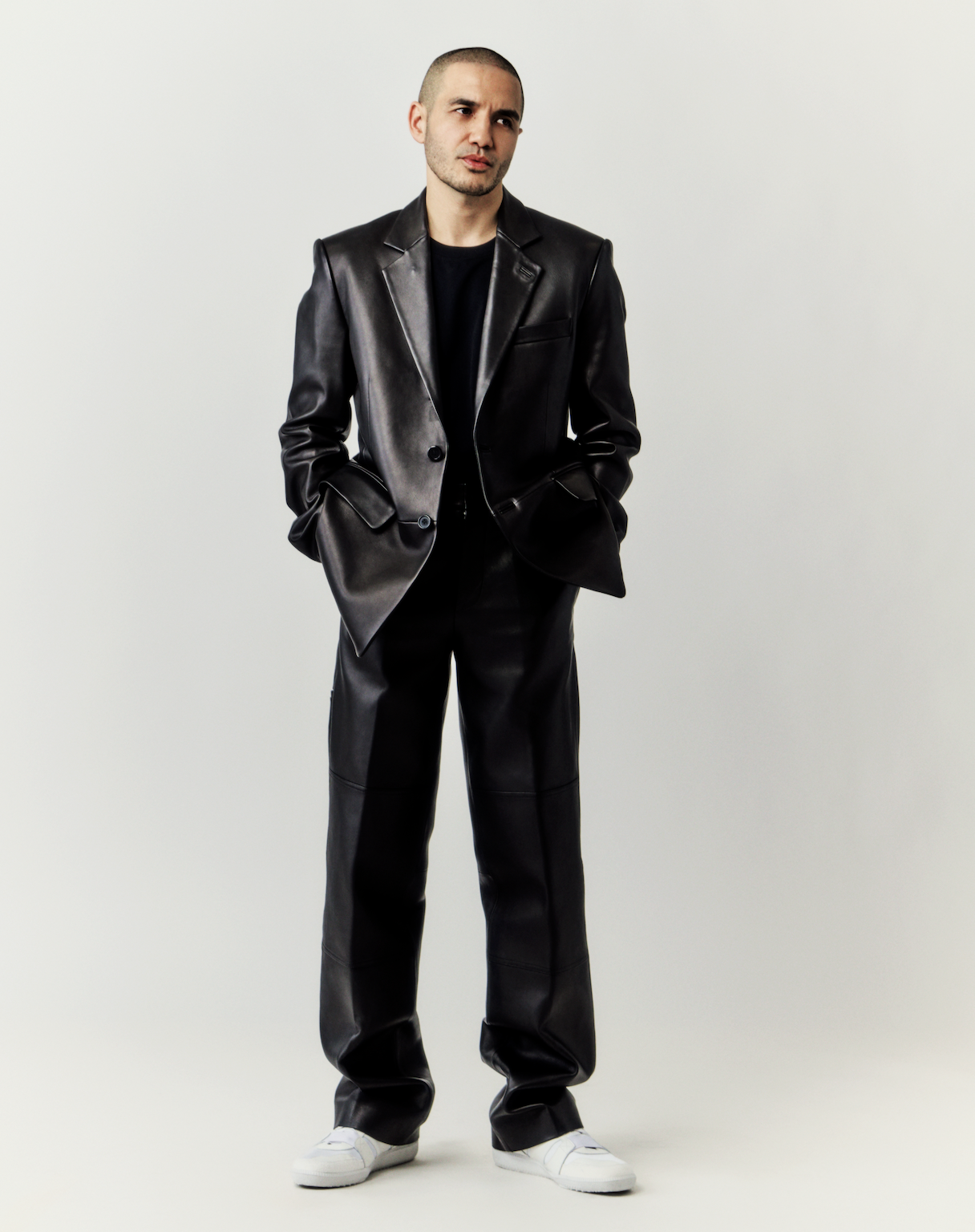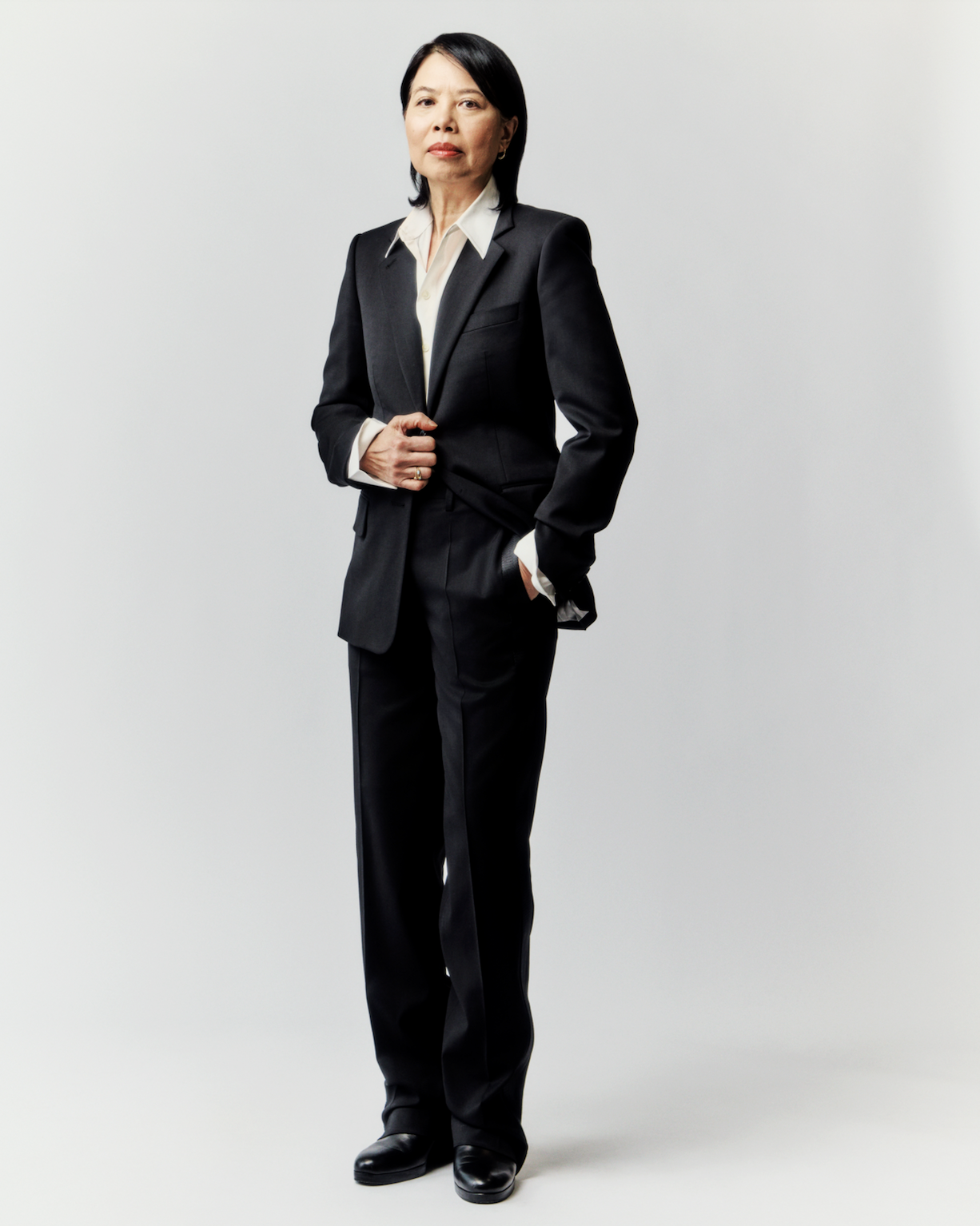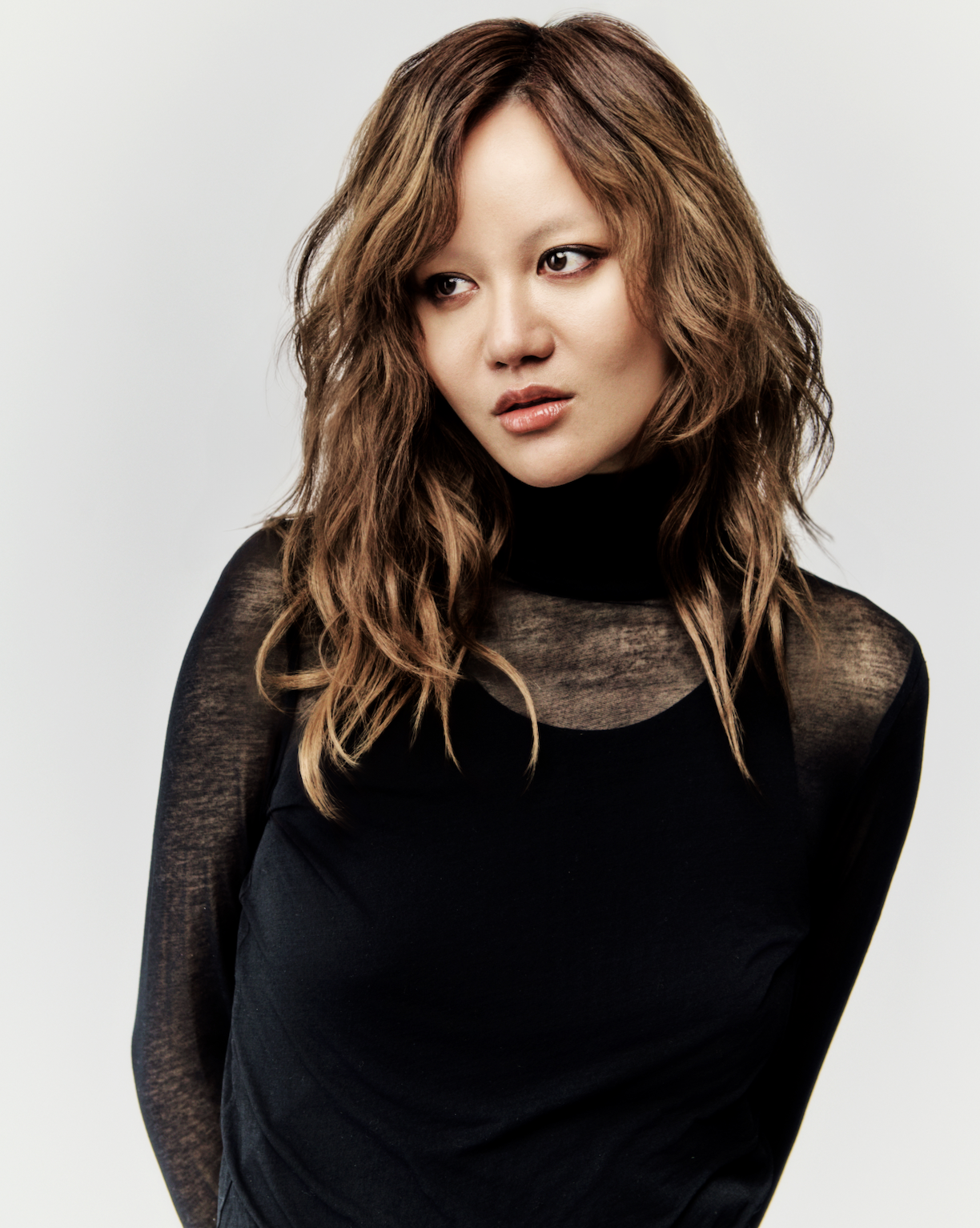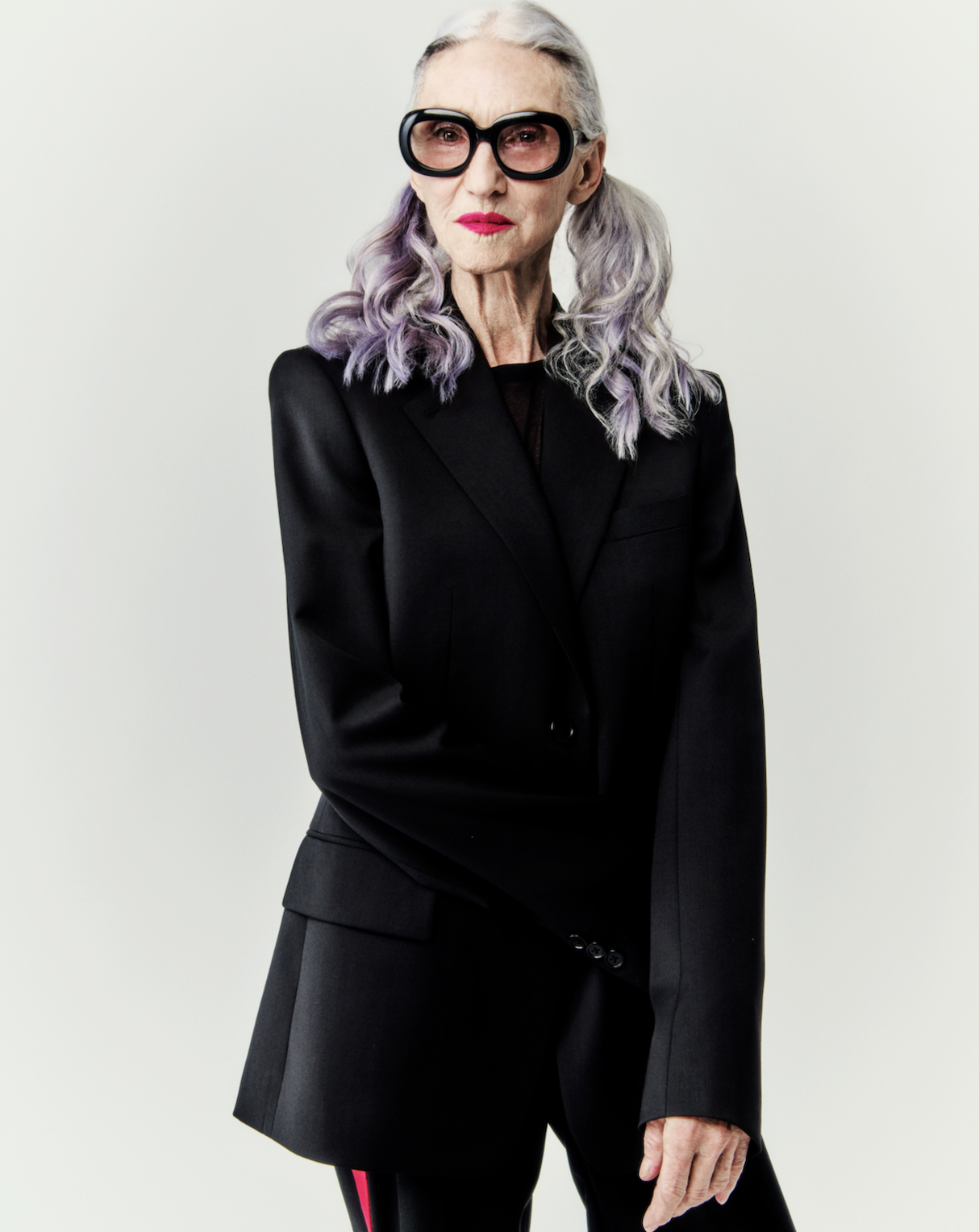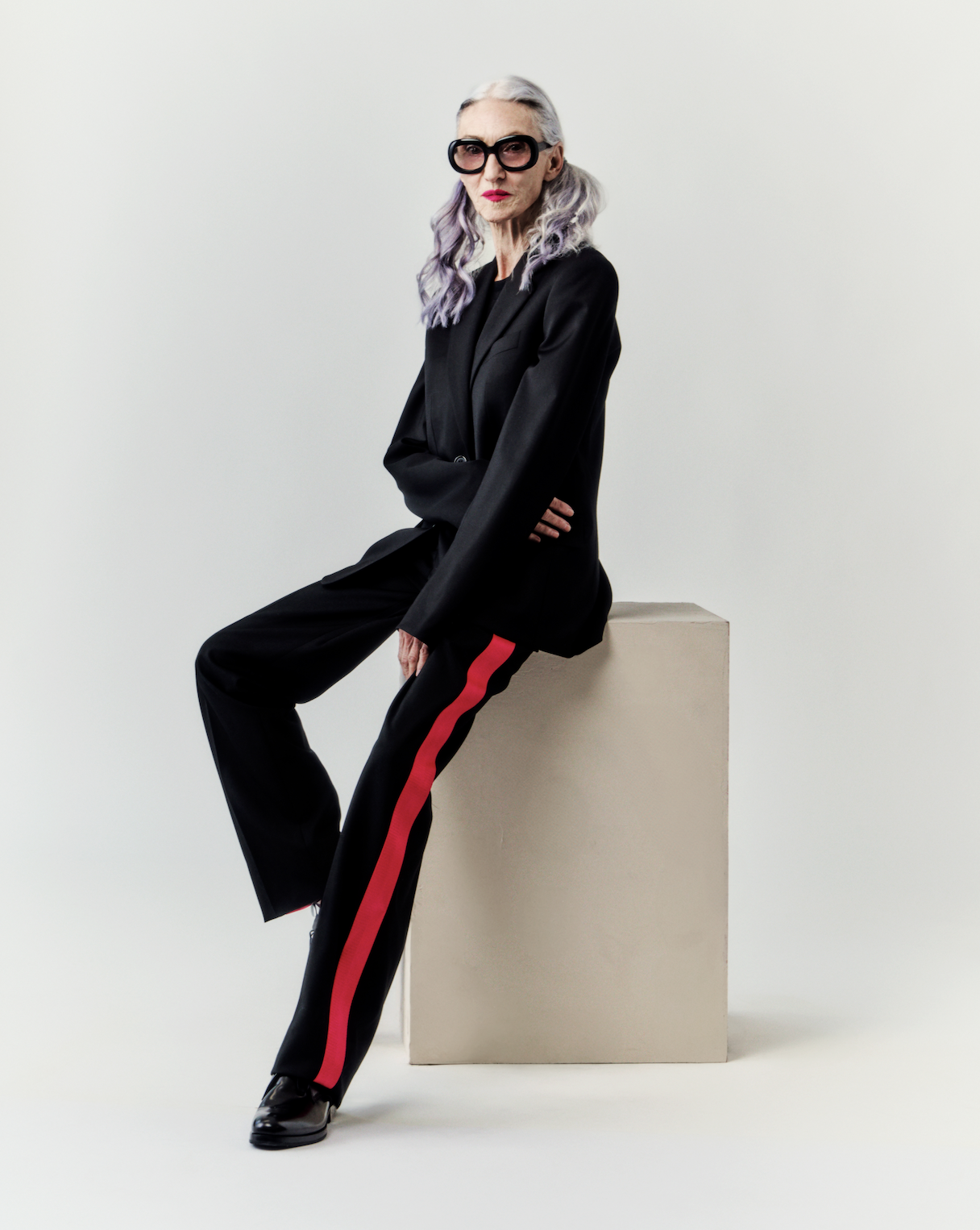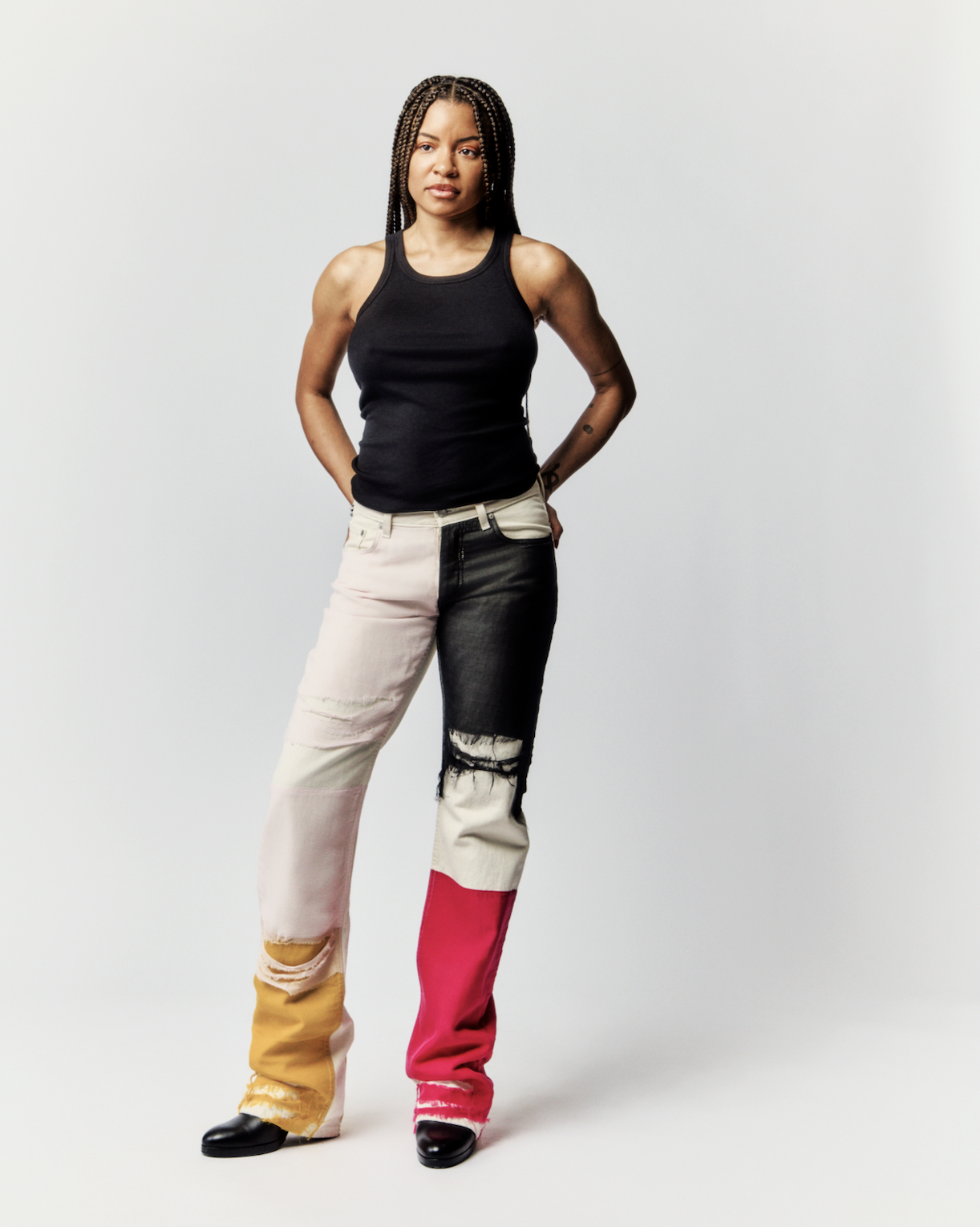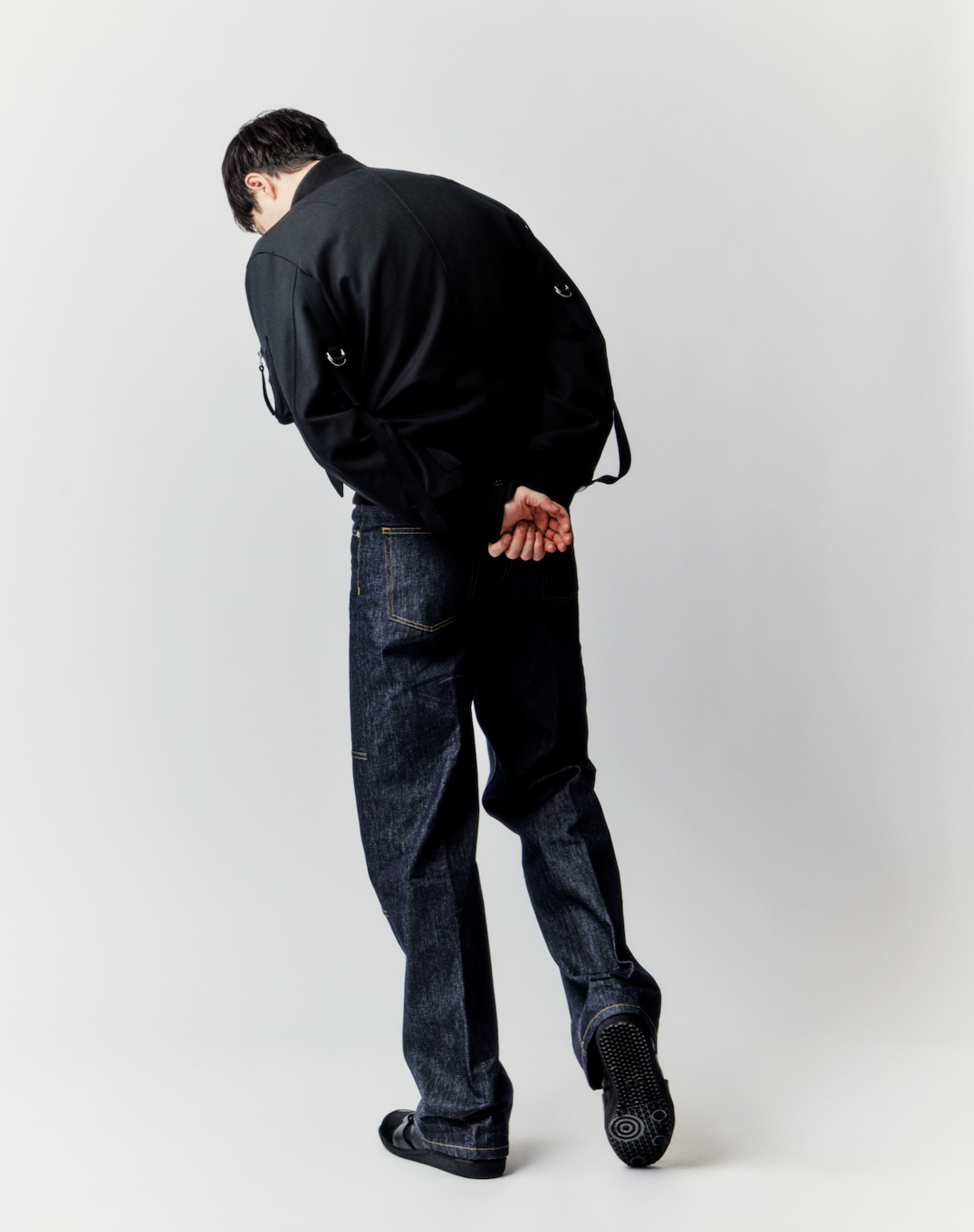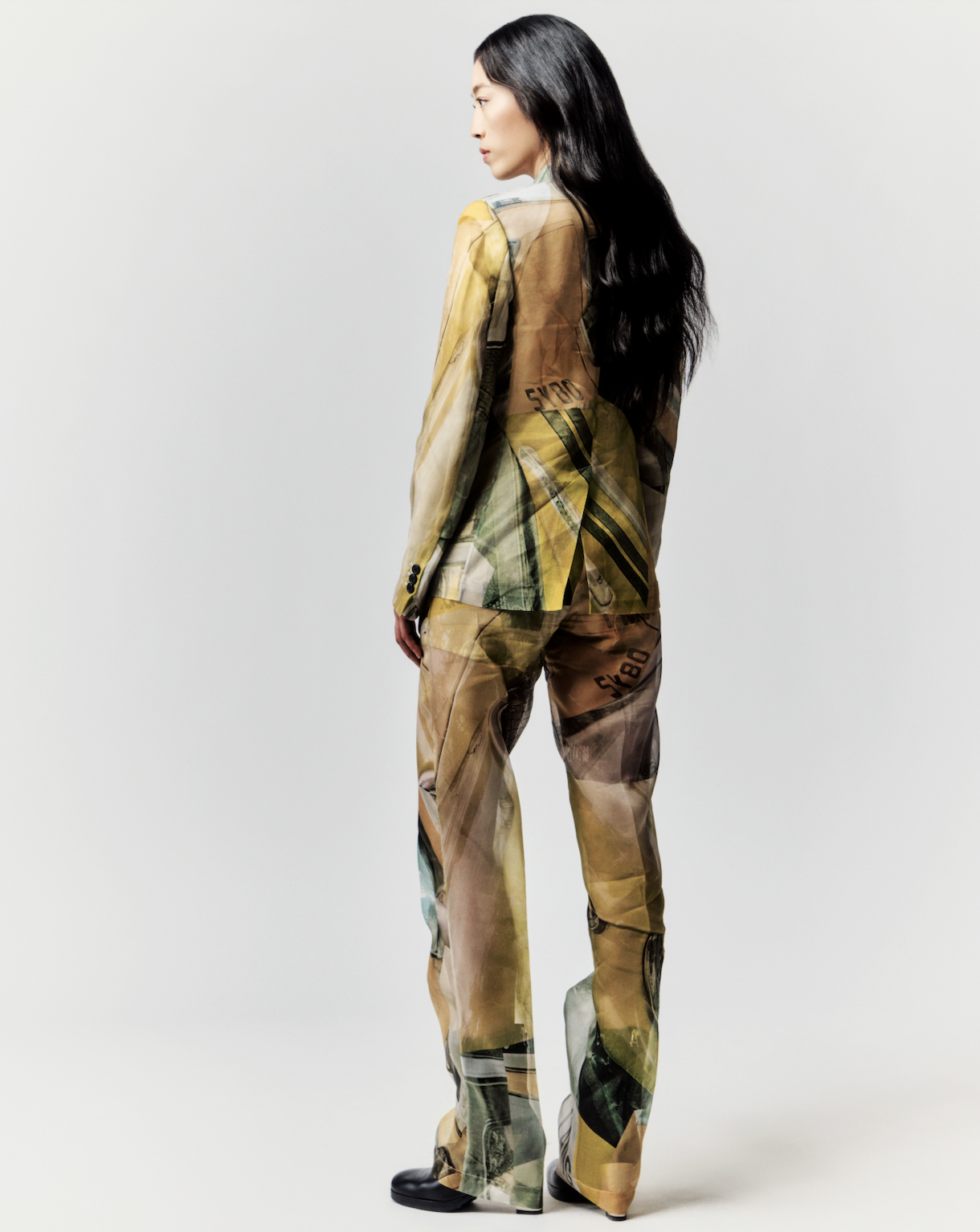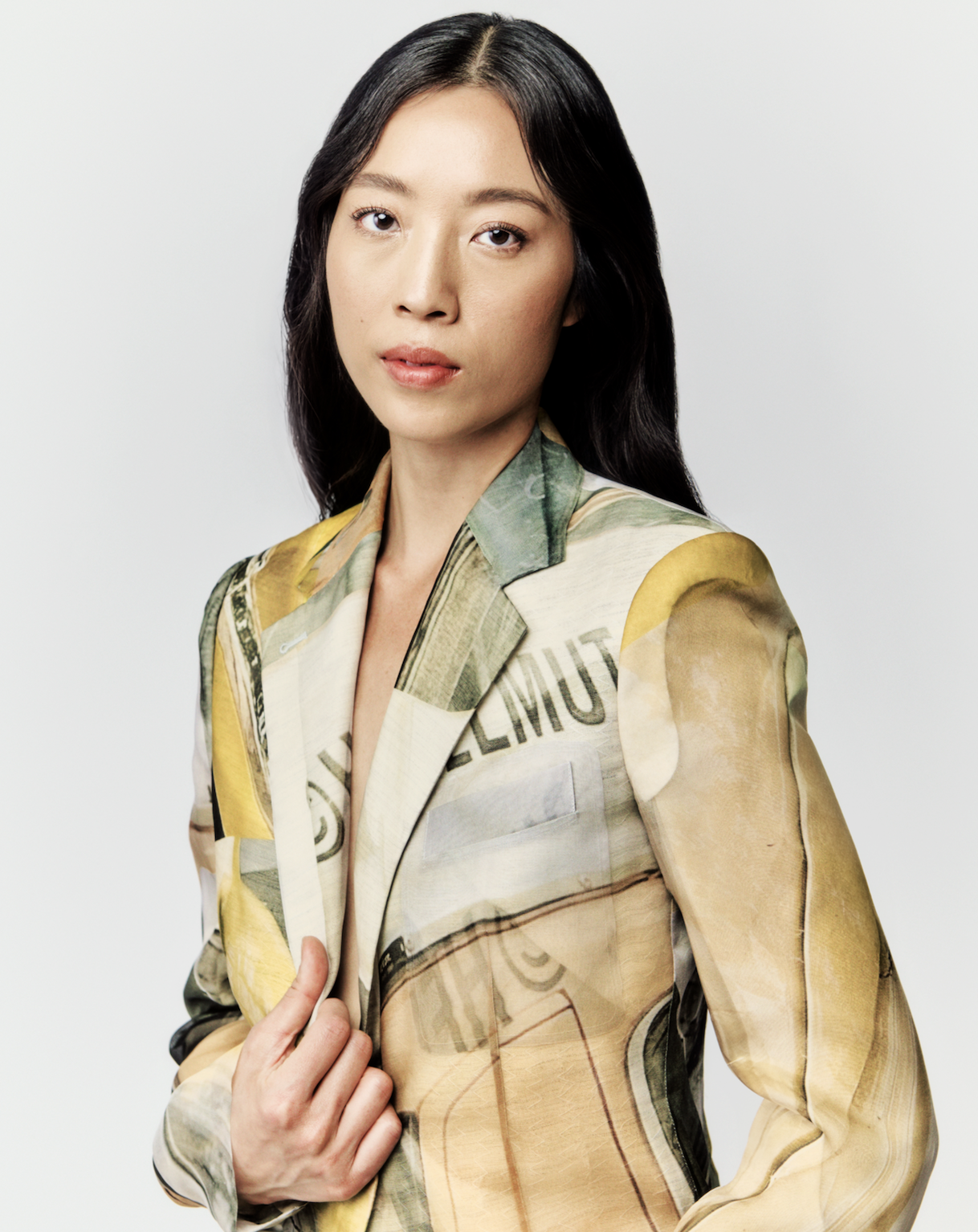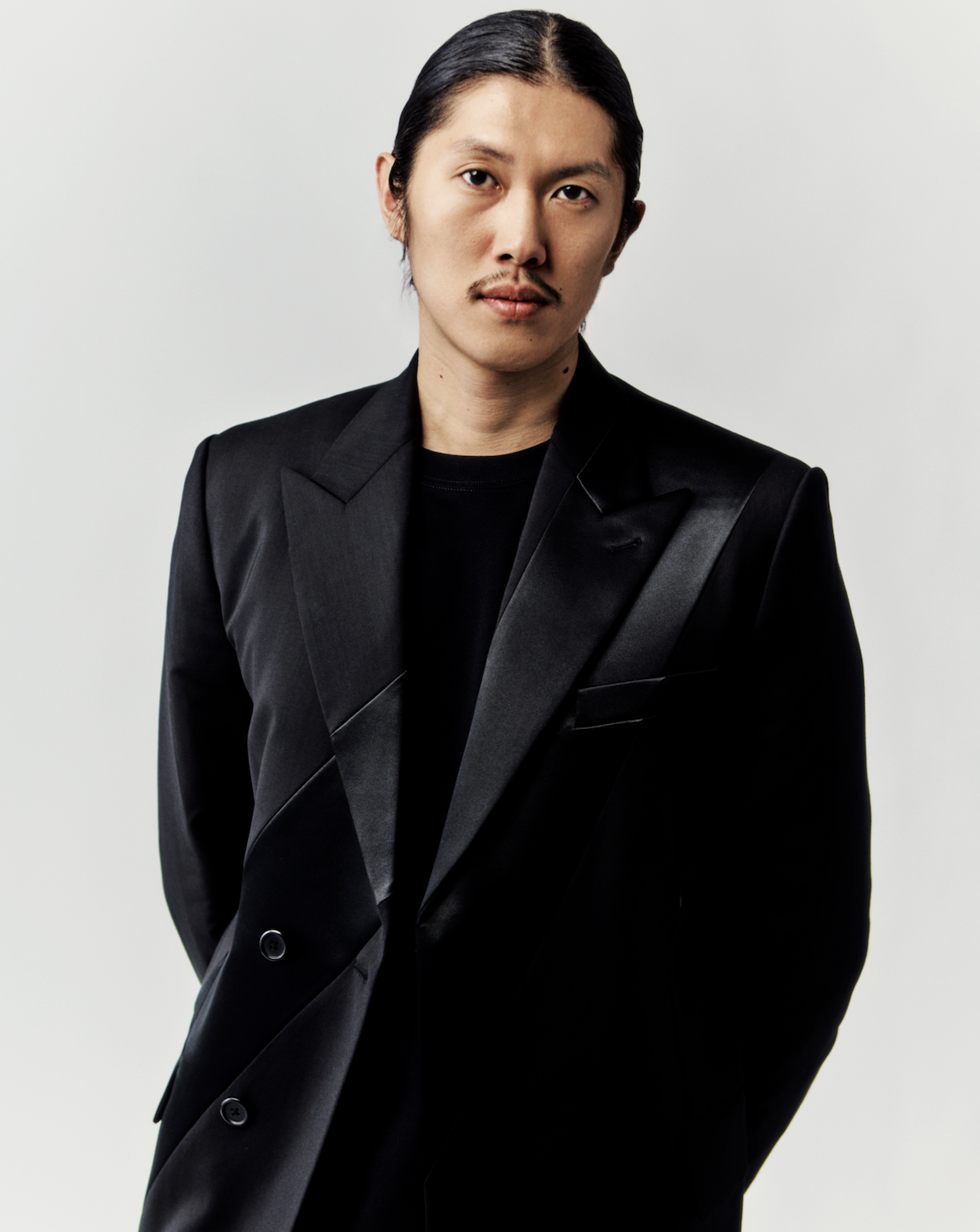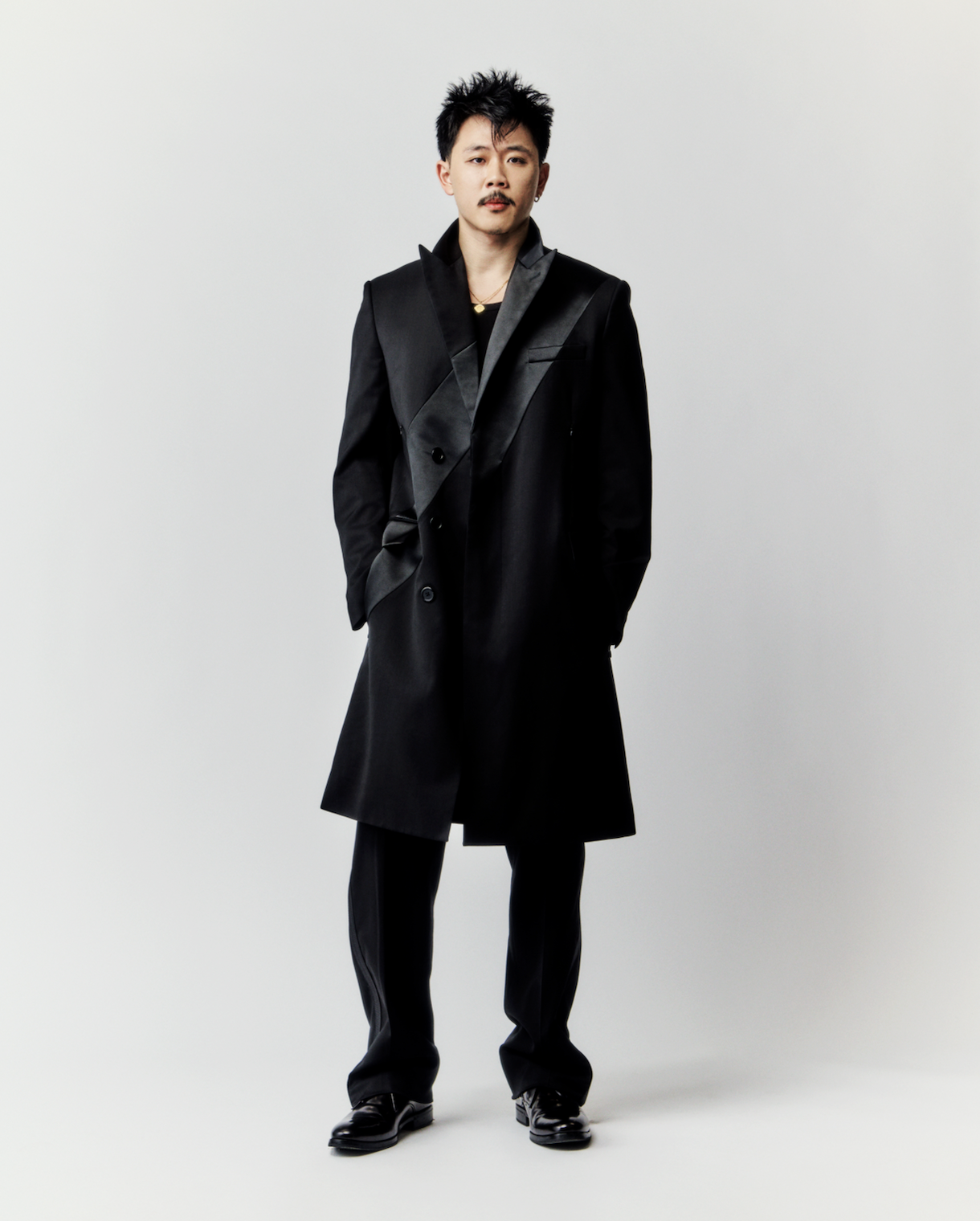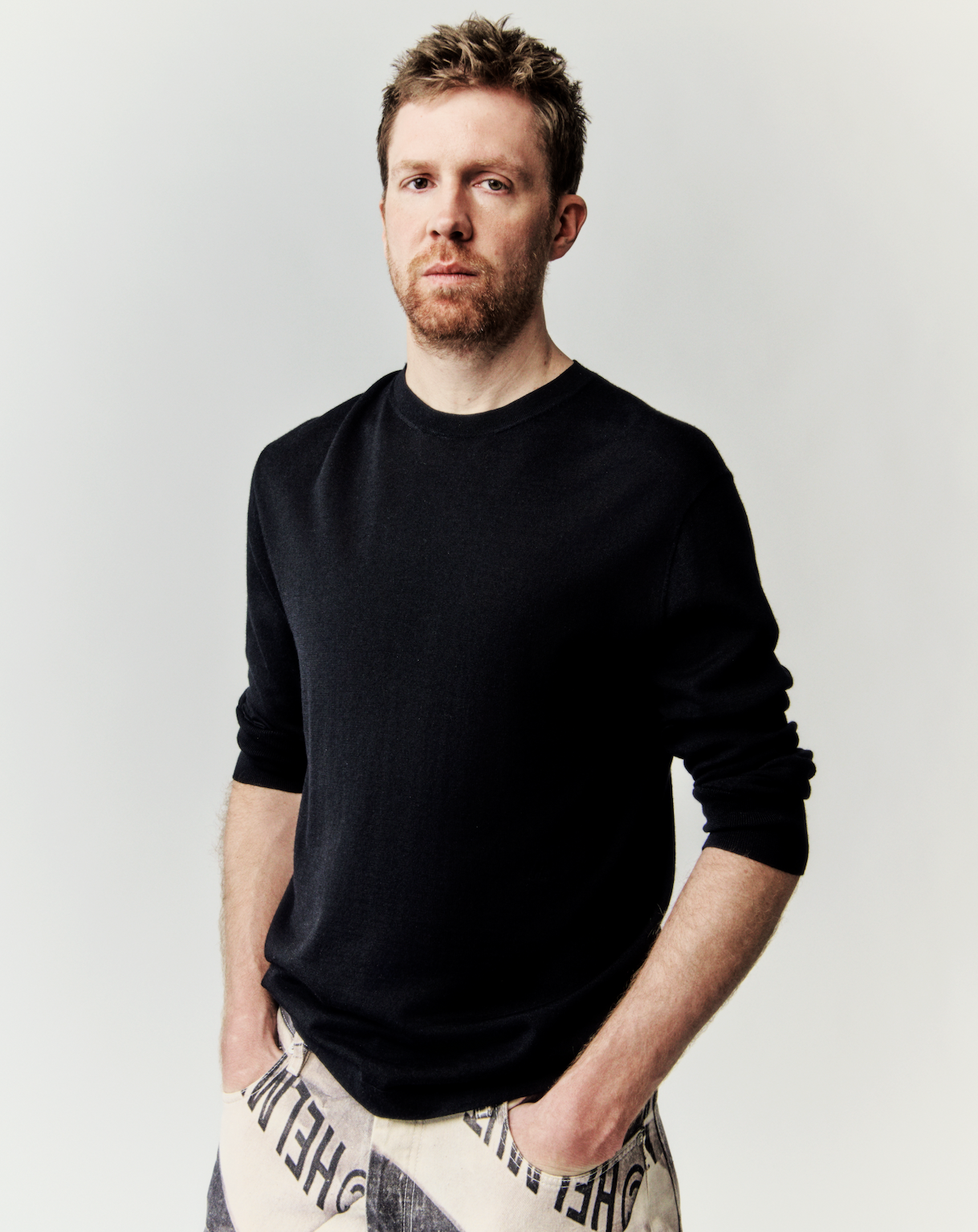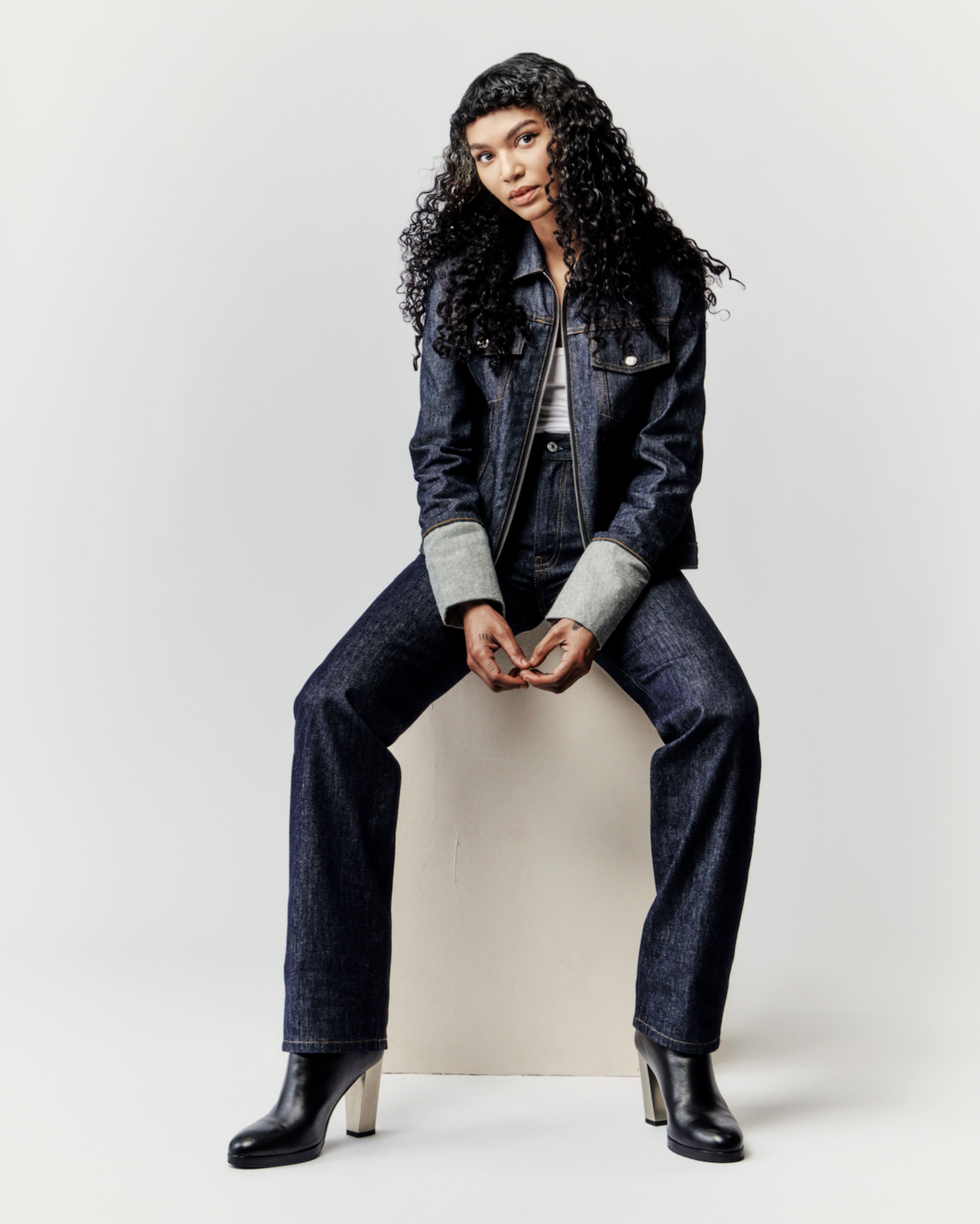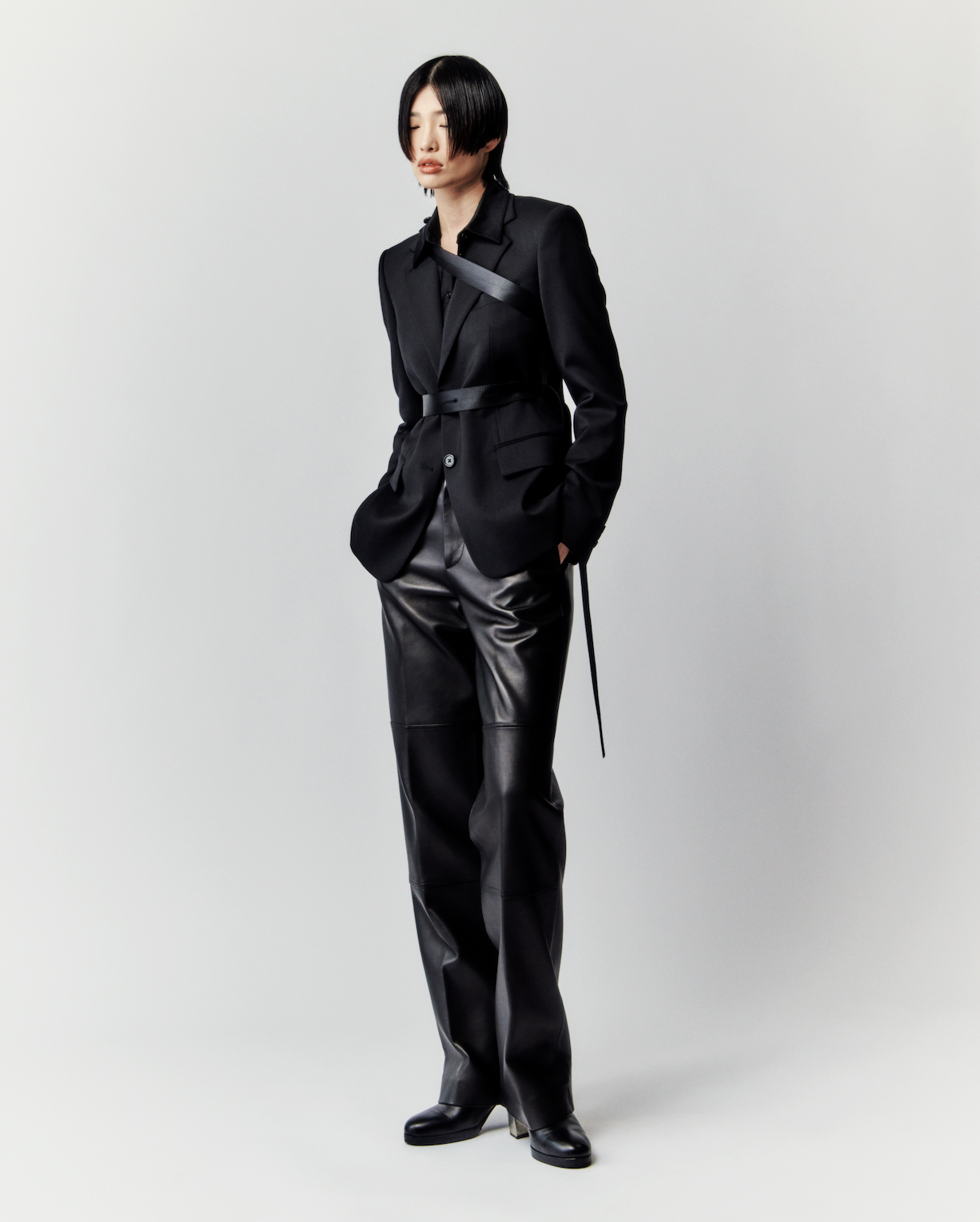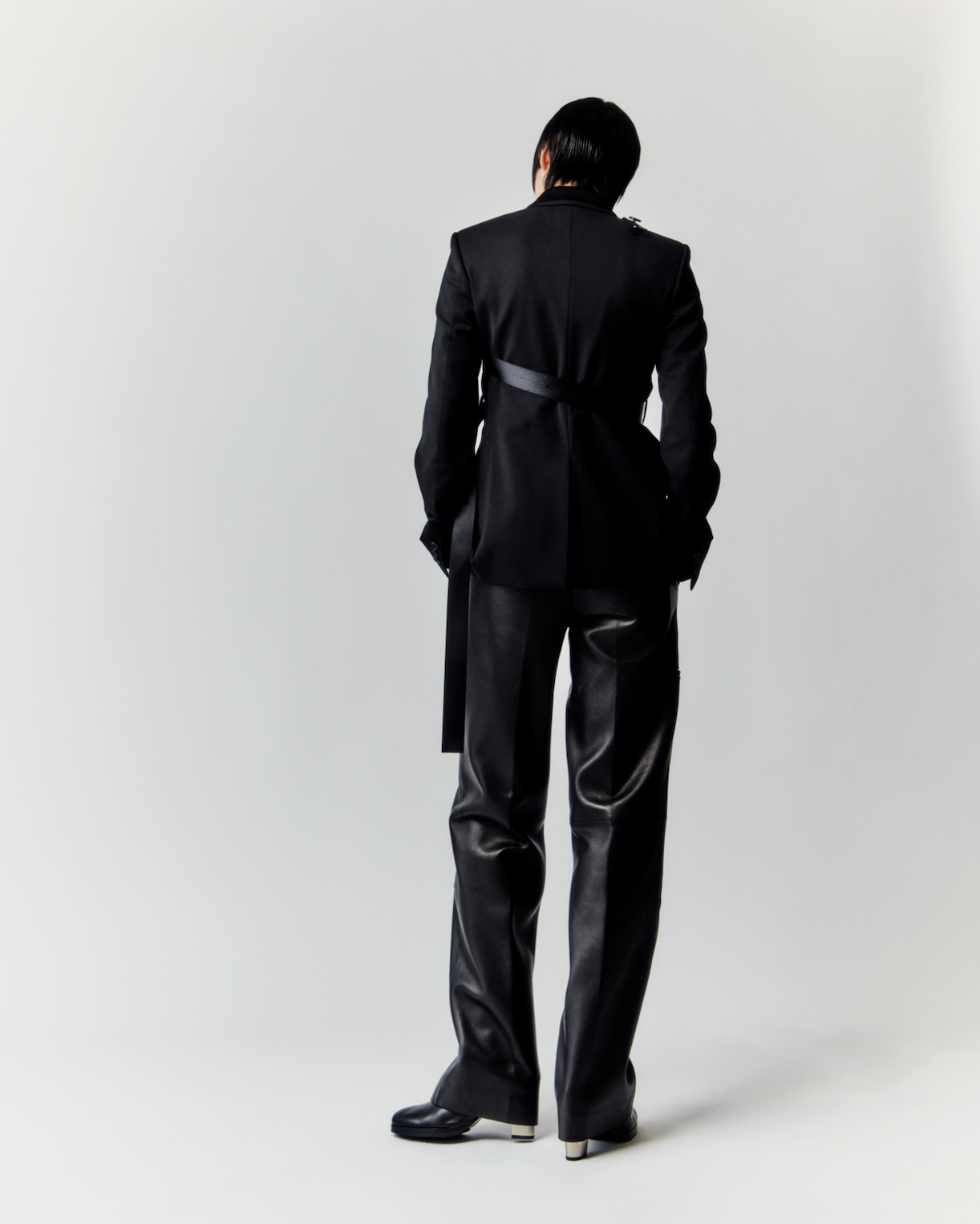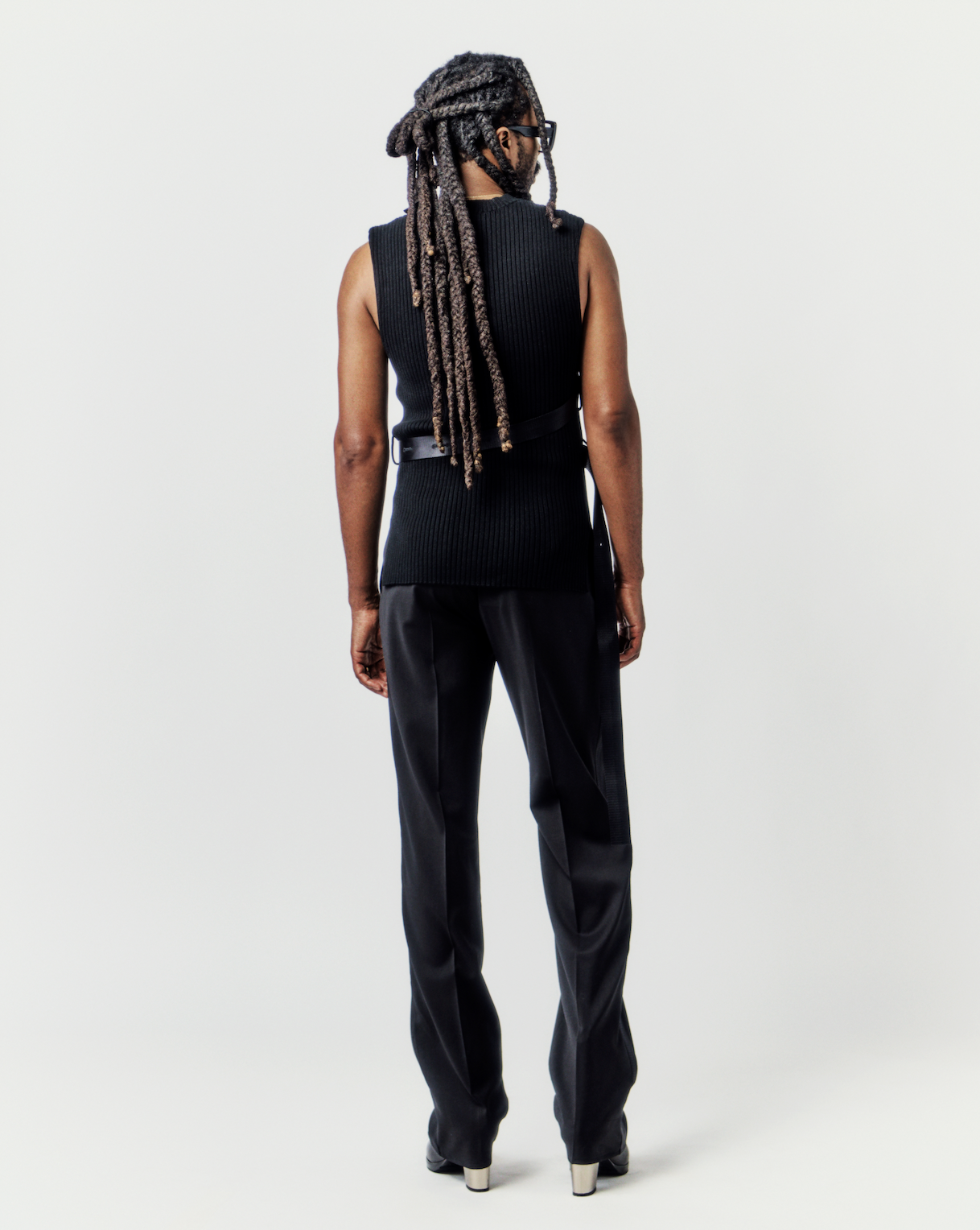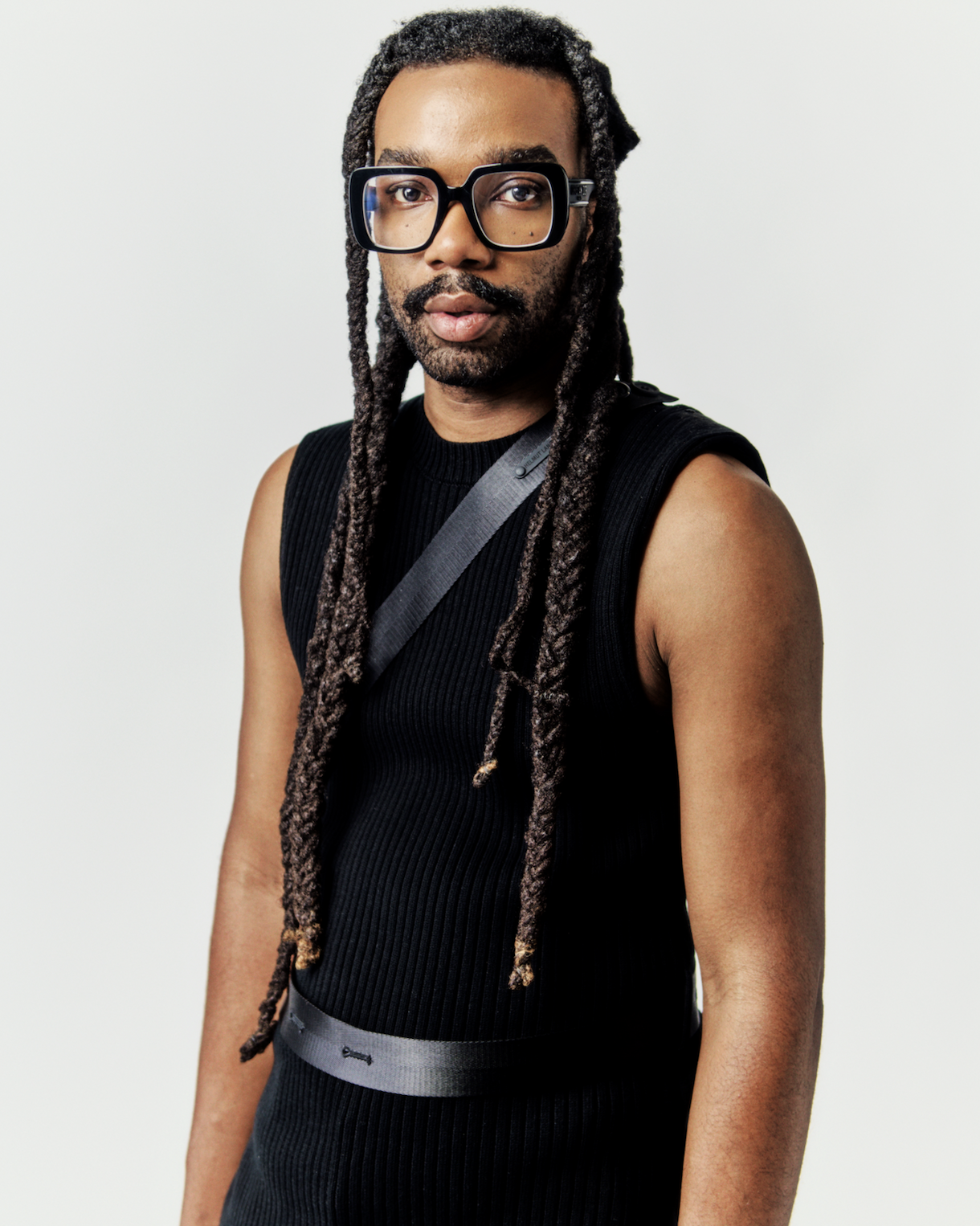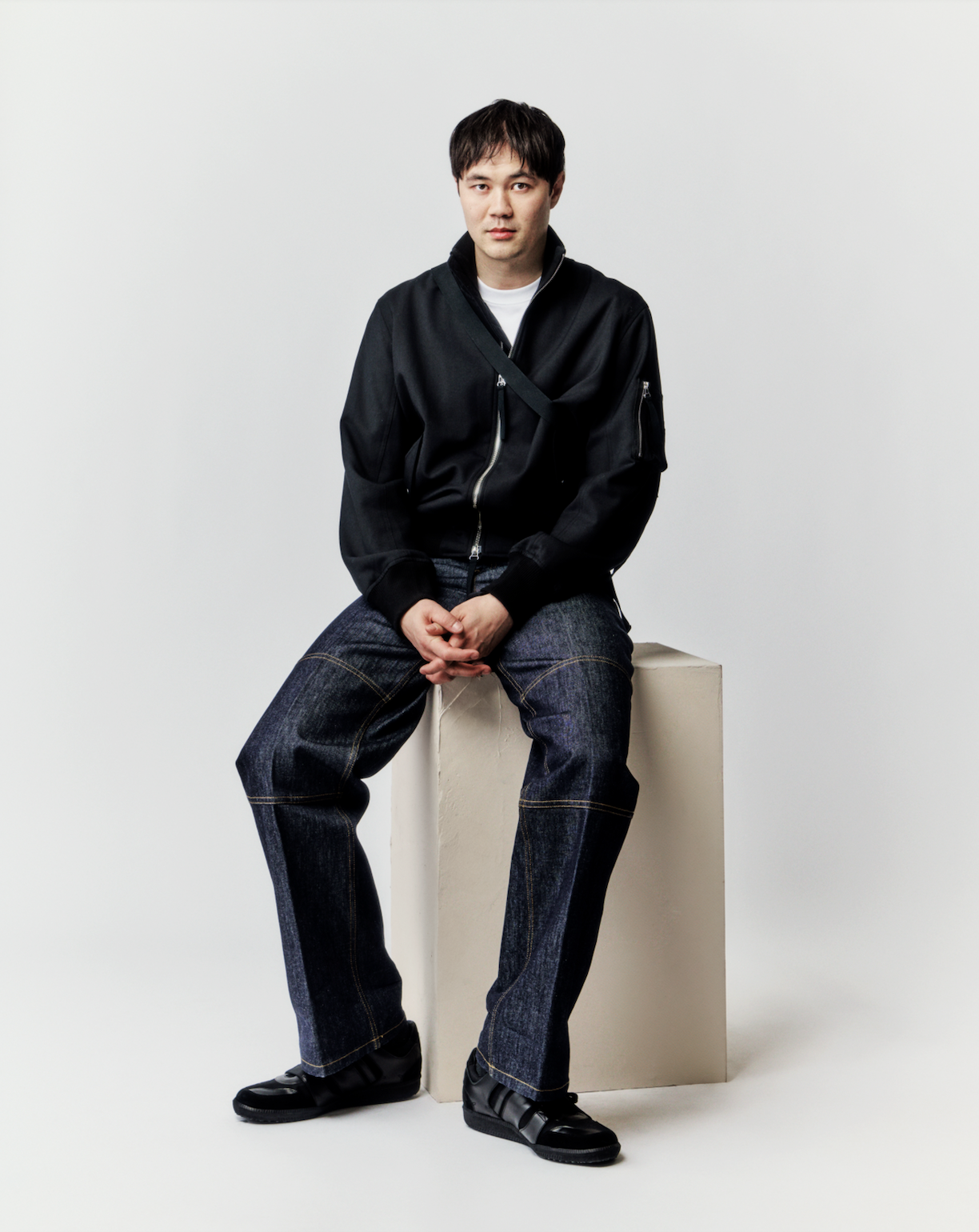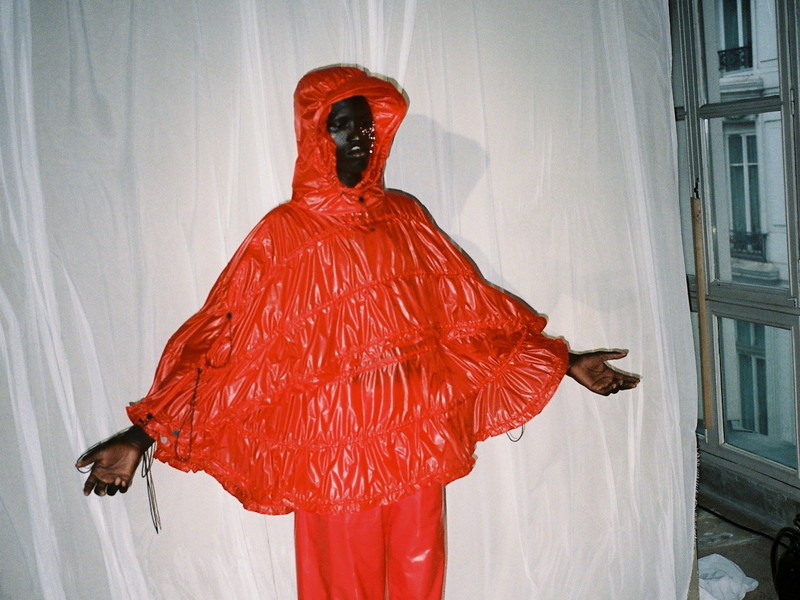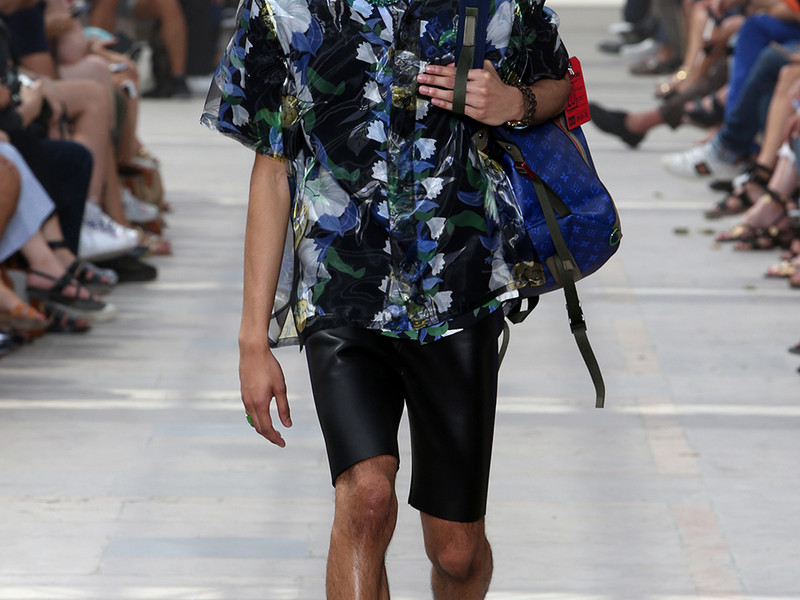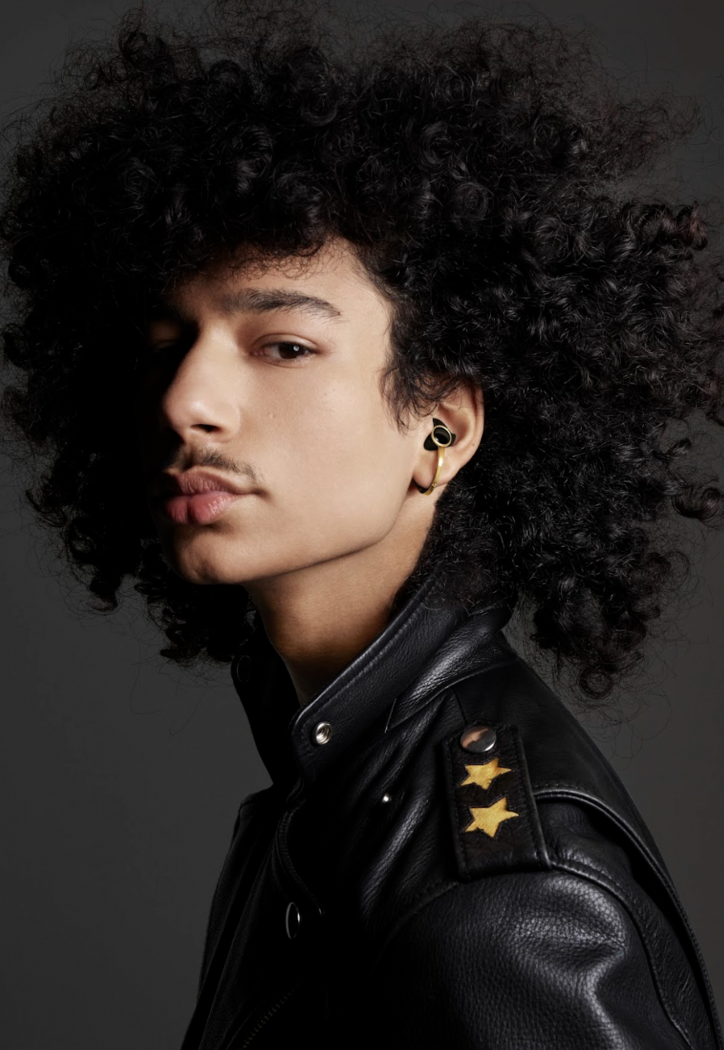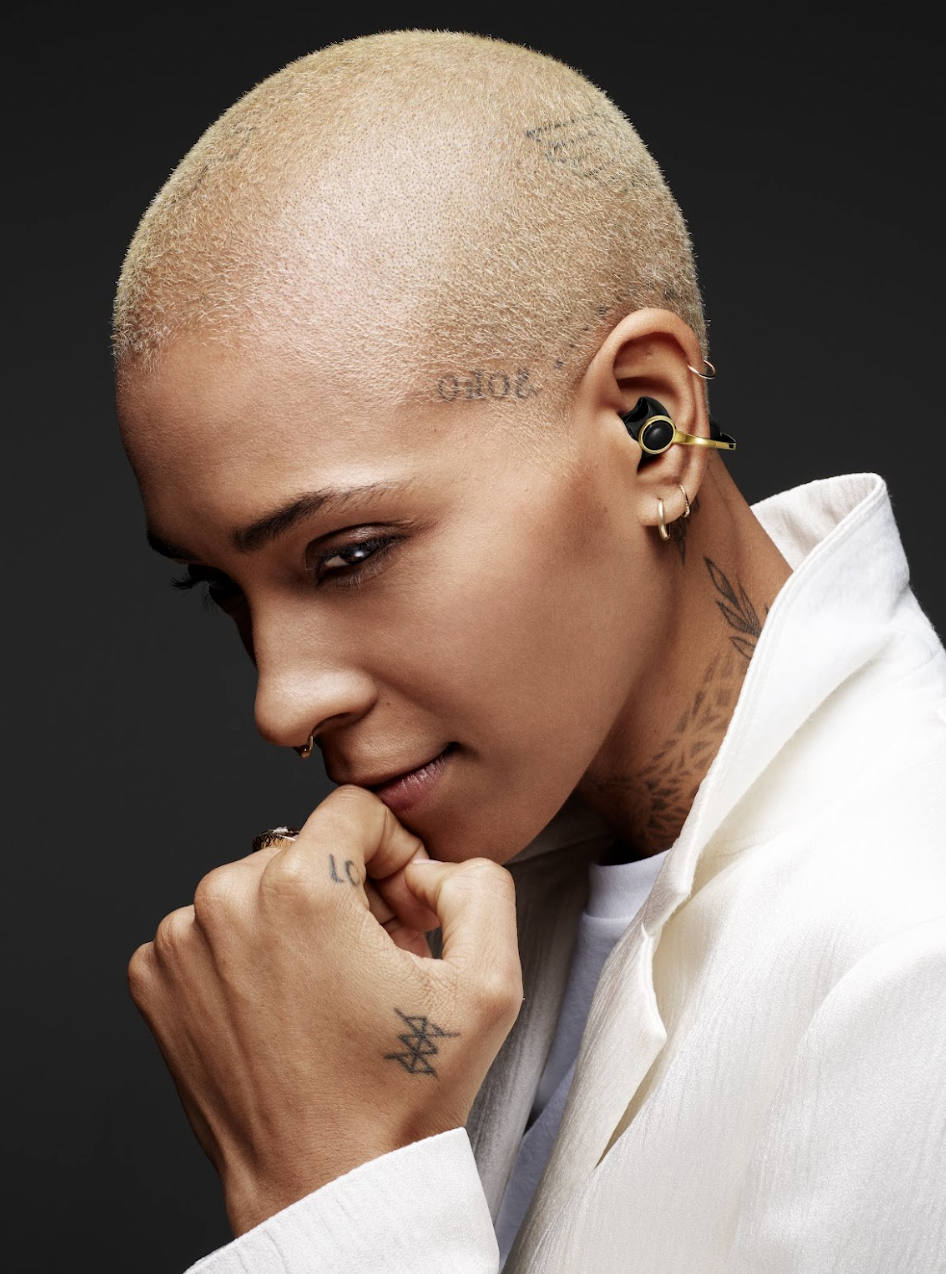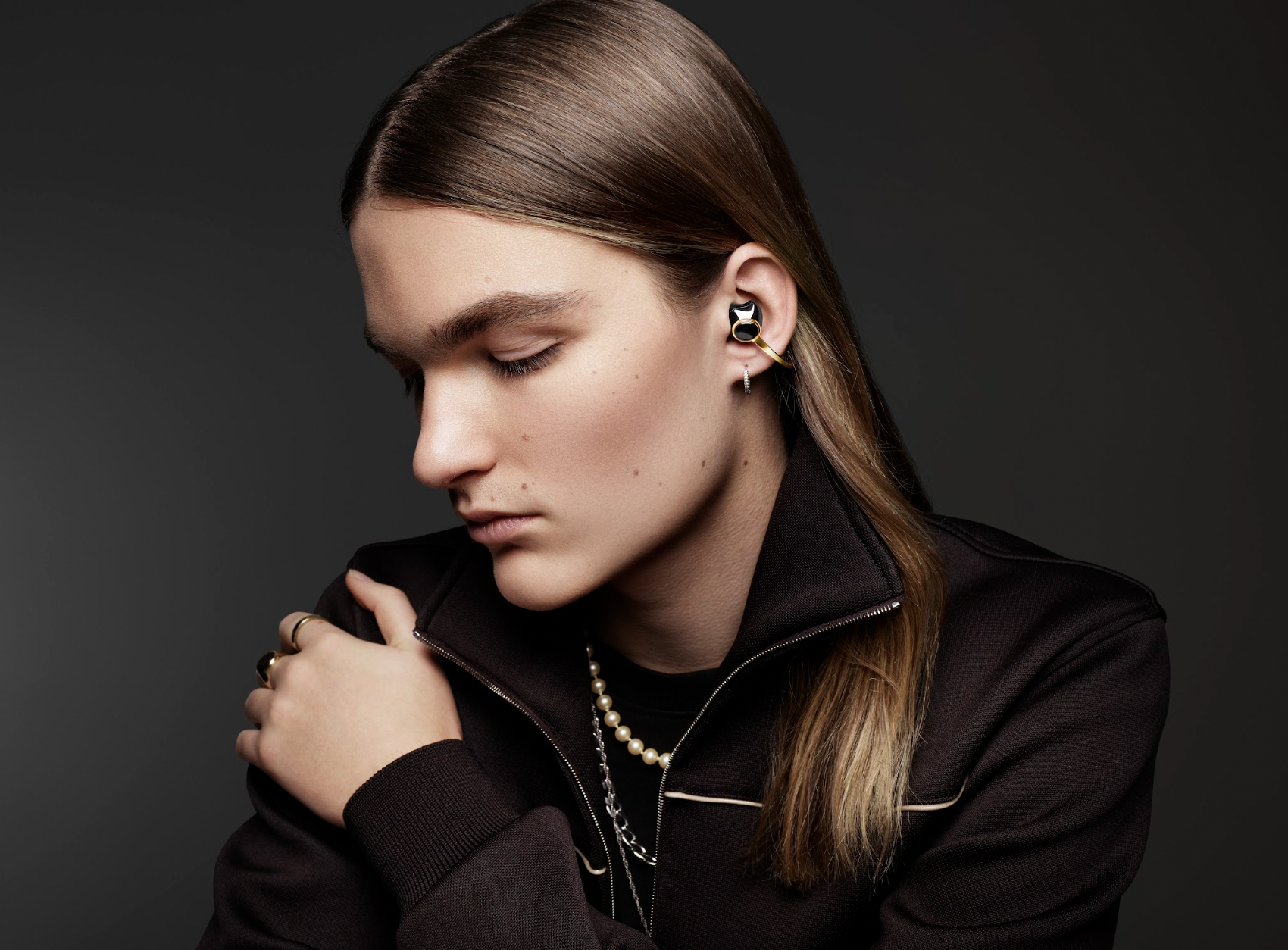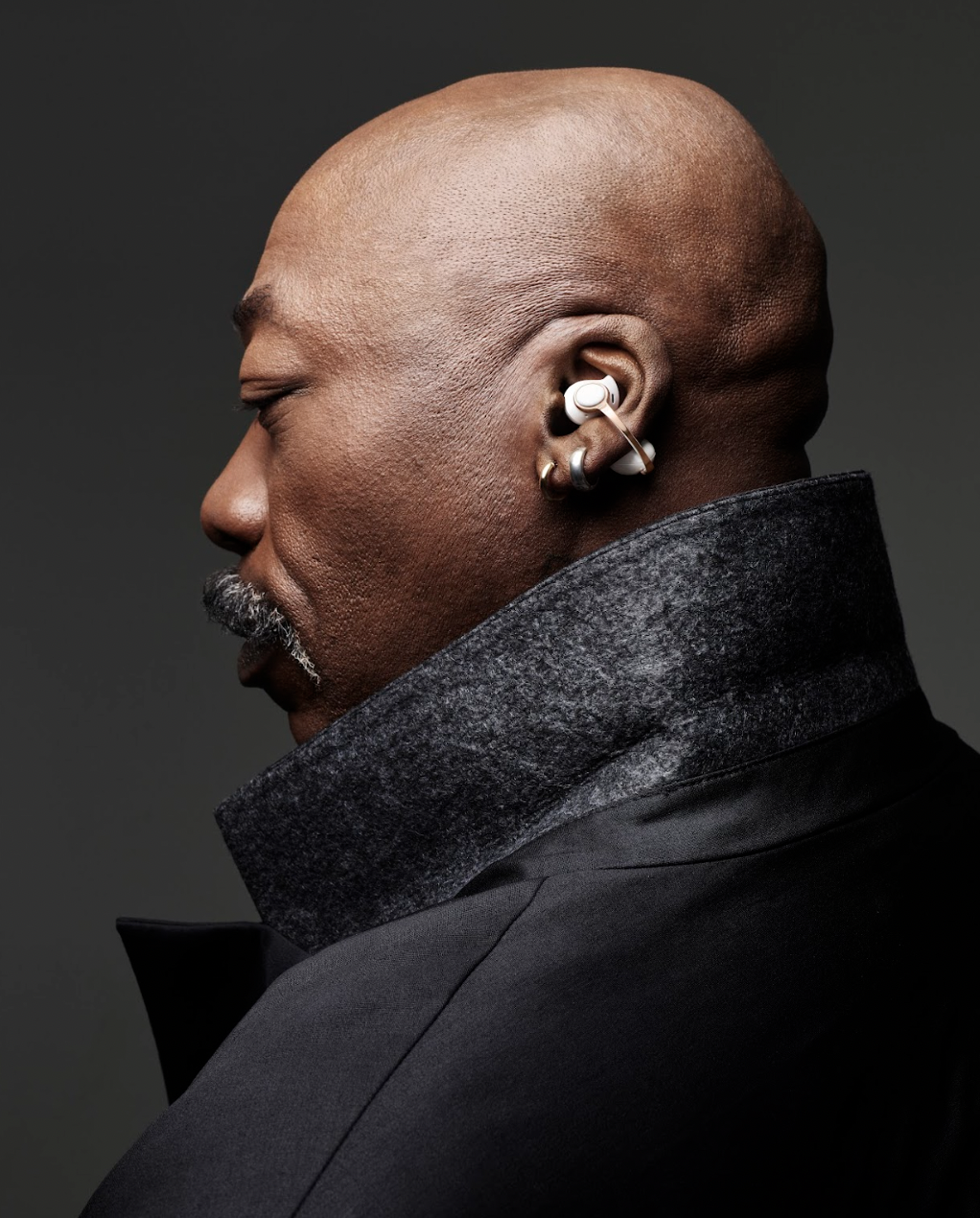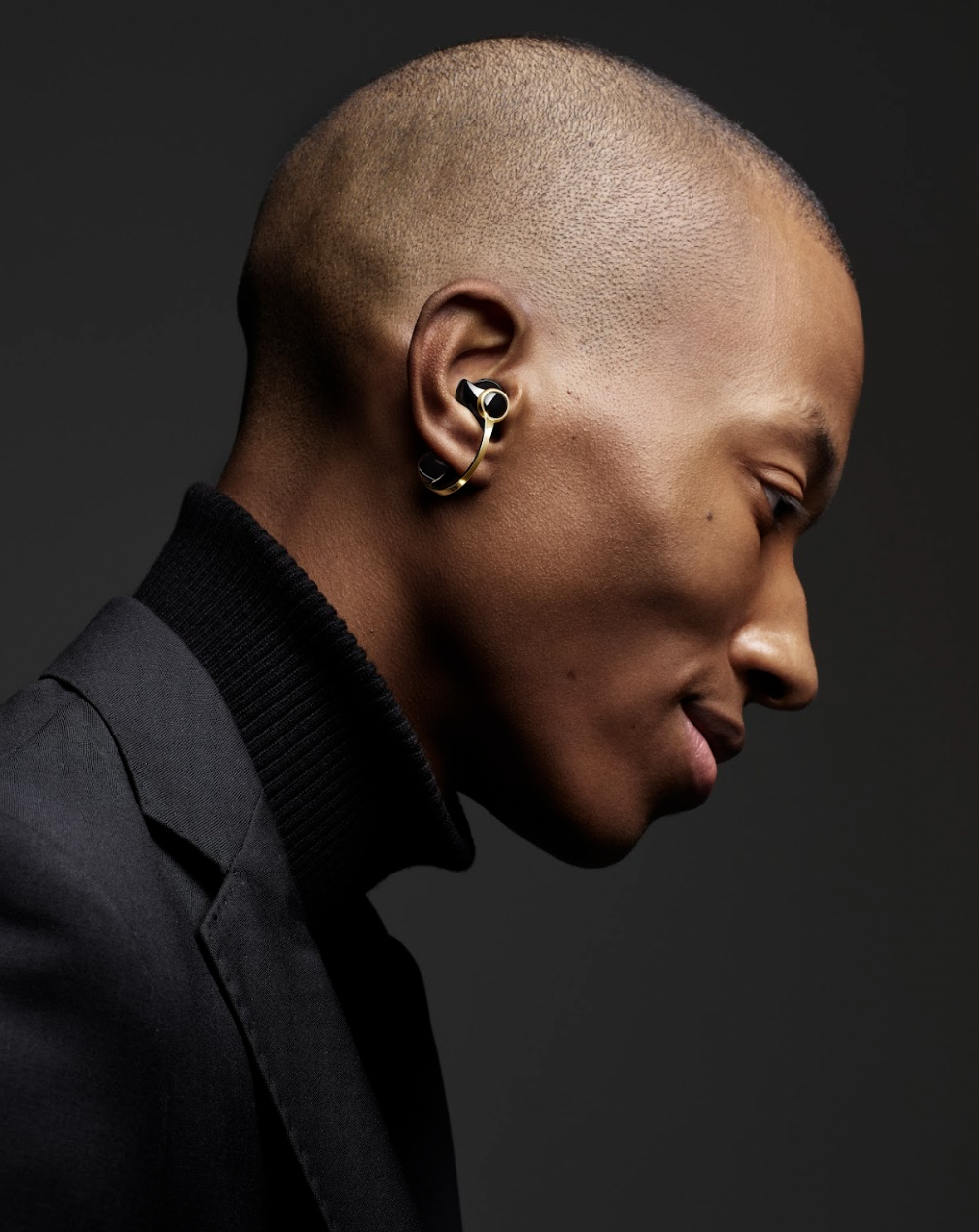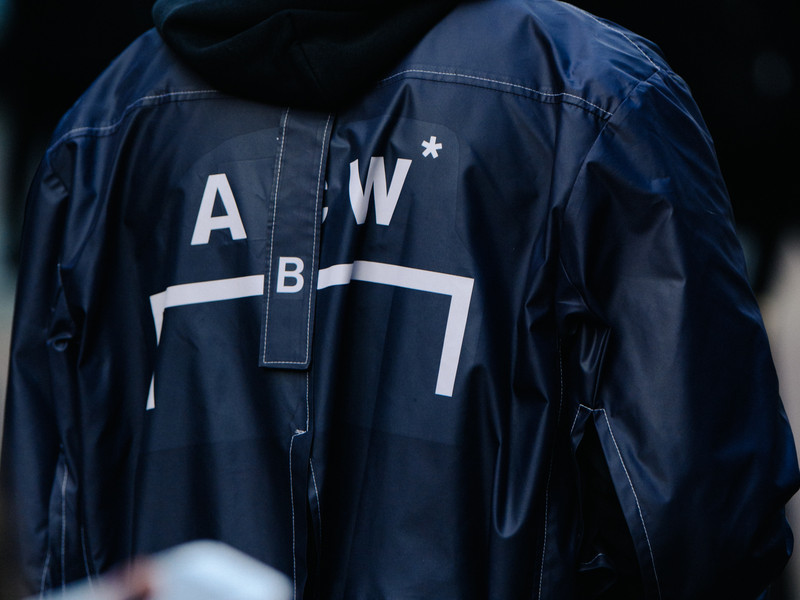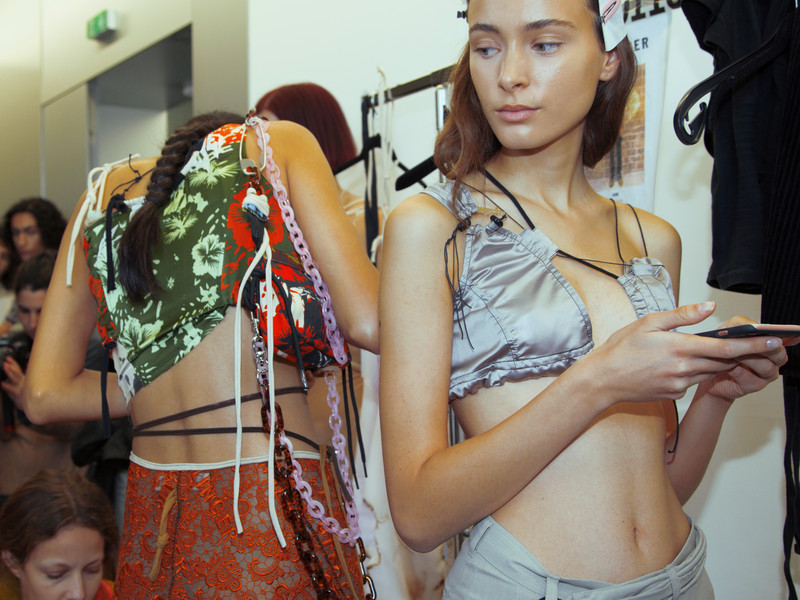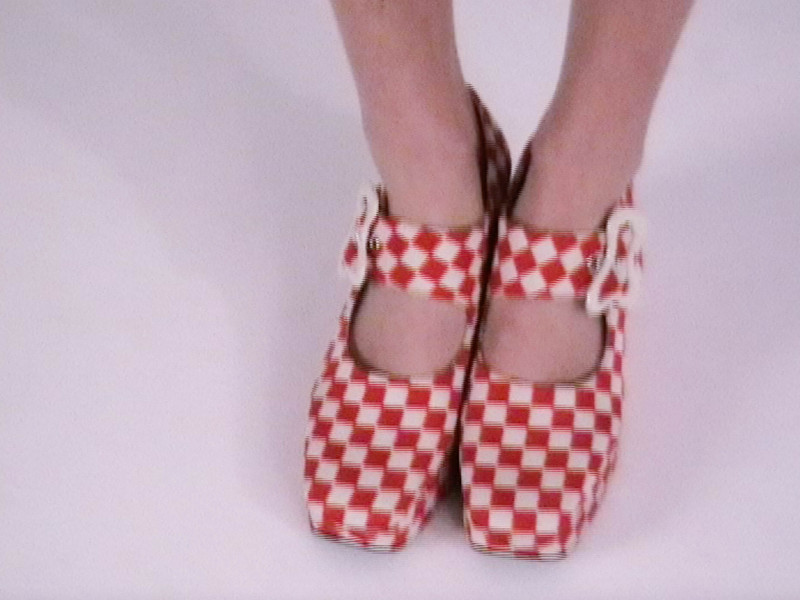Beyond the Valley
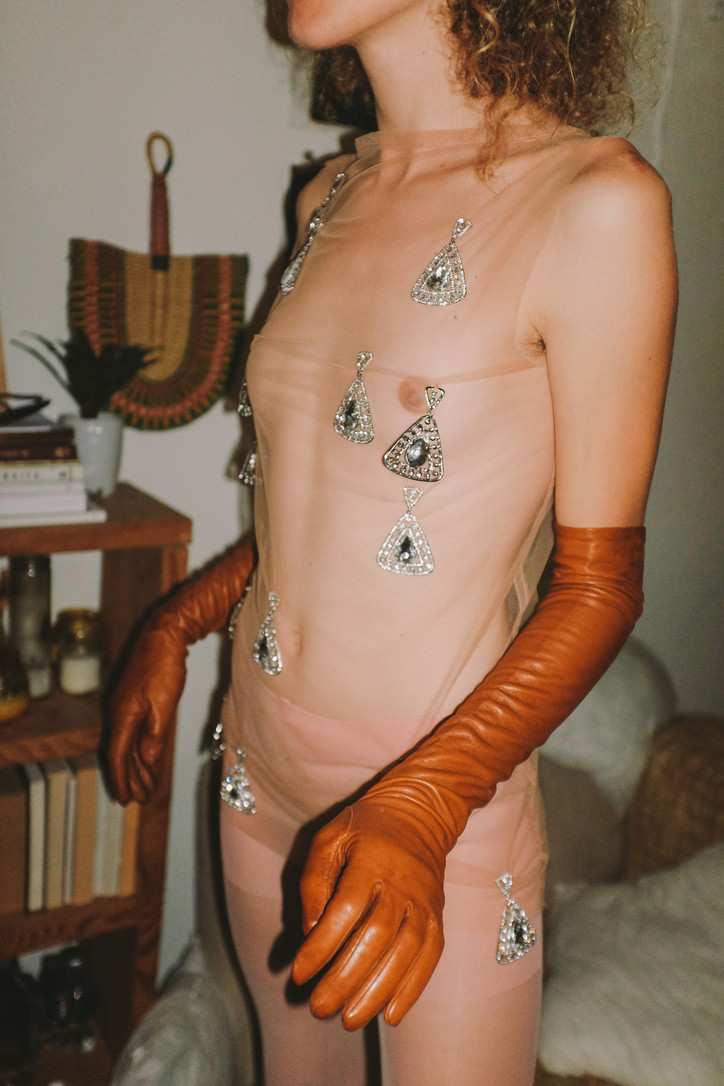
After the show, office caught up with Campbell to chat about the presentation and what’s next for the brand.
Talk to us about the primary ideas and structure behind Lordele.
My first collection that I showed last September was called ‘Heartbreak And The Bowery,’ and that was basically about Trump getting elected and me figuring out what it was that was going to keep me happy, and that is the Bowery. It’s [only one] part of New York City, but if you know the specific culture around it, then you know what I mean. Classic downtown—that was the start. For this collection, which is called ‘Beyond the Valley,’ I took major inspiration from a recent trip to LA where I was very late-to-the-party in discovering that the gorgeous pink sky that it’s known for is actually all fucking pollution—it’s actually like the death of us. So, I became interested in this dichotomy where we can find something so grand that’s actually killing us. That was a starting point.
Did you have any other references?
I’m also very inspired by vintage culture—I was watching Beyond The Valley Of The Dolls by Russ Meyer and Chinatown. A lot of ‘70s stuff for aesthetic ideas. In ‘Beyond The Valley’ there are four main characters: Pop Star and Politician vs. Farmer and Schoolteacher. With the actual clothes, I wanted to make workwear for queers that they could feel comfortable and also glamorous in. On a deeper level, I wanted to address how do these different forms of American culture affect each other—like how does a pop star affect a schoolteacher and how does a politician affect a farmer. There are, of course, literal ways, like politicians finding ways to destroy farmer’s careers and teachers educating people to become pop stars now that we’re in the age of Instagram—kind of showing the connections between everyday jobs and ideal jobs; the connections between people with lots of power and people with no power, cause that’s a lot of what American culture is—we often stifle one community to uplift another. It’s awful because so many marginalized communities are affected by that. I want to add my voice to these topics. We all play a part in this no matter who you are—from littering, to voting for someone like Donald Trump; from petty things to heavy things. I think it’s important to be educated in that.
This location is so unique. How did you go about choosing a recycling facility for this presentation?
I’ve always wanted to have a show at a junkyard, but then I was like, ‘Wait, it smells.’ So, once I encountered this location and noticed it’s all just plastic, I felt a true sense of Americana. Like all the Coke cans made me think of Andy Warhol—into it. It very much matched what I was into for the collection. Then our stylist Kristi Kruser educated me a lot about sustainability and how to compost, which I never knew about and am very grateful to have learned. That knowledge brought me further into the collection—we’re all just starting to understand the problems. We don’t all have a direct solution but we can know how to help. I wanted to translate that to my clothes.
It also speaks to the larger theme of teaching—like, if you teach someone how to recycle this is where their recyclables will end up.
Exactly. I hope people arrived for the show and were like, ‘What is this?’ before learning that they can also compost here and help out.
Do you have a personal favorite look or piece from this season?
I’m a small designer and I work with small budgets. I really put my all into the evening gown worn by Miss Kenzo. I love that dress. I love glamour and I’m not afraid of it. So, I’ll definitely say the gown.
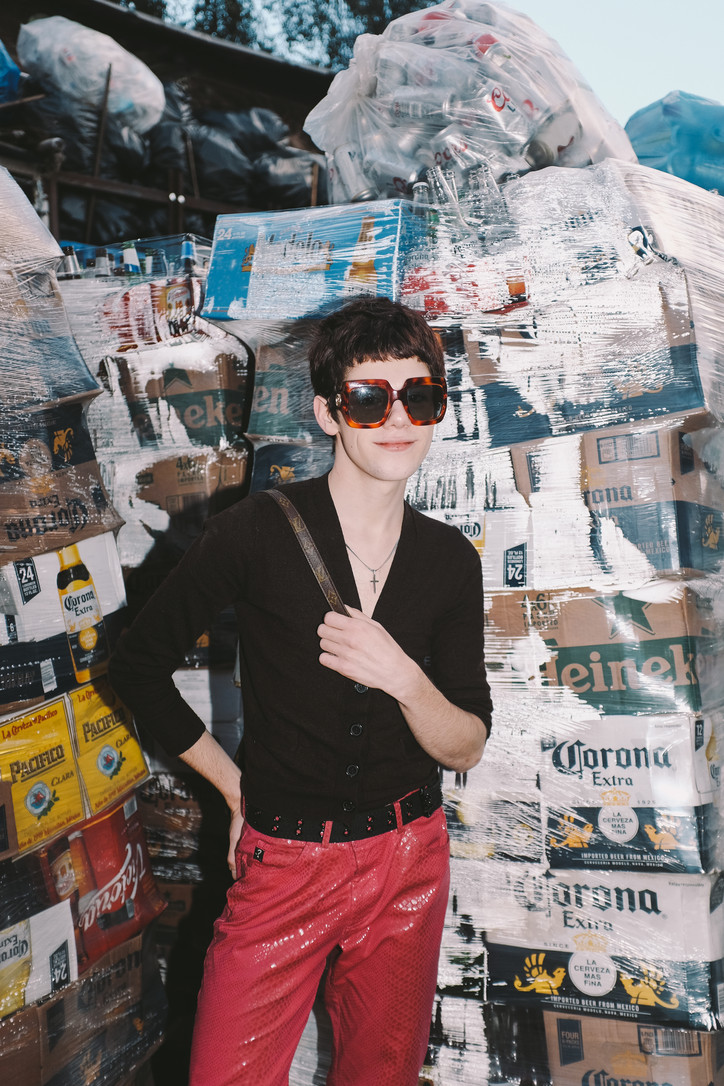
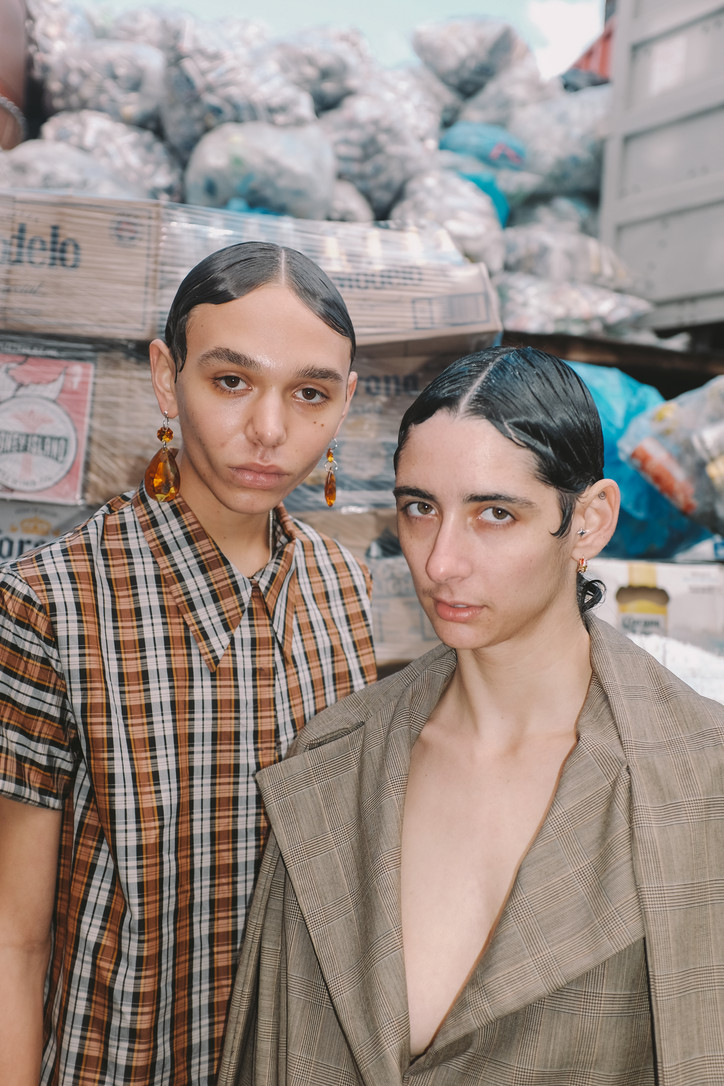
Talk to me a bit about the casting process—you had some really gorgeous faces on the runway today.
I can give most of that credit to Mr. Joe Viola. He has such a good eye and is always looking, looking, looking. We discuss everything together but Joe has such an eclectic view on what fashion should be and I try to, as well. I don’t want to make clothes for just one kind of person. I’m not interested in having a fashion show with just a bunch of skinny girls—not only because it’s cheesy, but because what is that really doing for anyone? As corny as this sounds, I do hope that some fag in Arkansas comes across this show on his Instagram feed and feels like, ‘Oh my god this is so cool, I’m not a loser.’ People think, ‘Oh it’s 2018, we’re so progressive!’ and that is not true. There are trans women being killed every day; there are fags being beat up all the time. We live in New York so we think, ‘Oh everyone wants to be progressive,’ but if you go, like, fucking 15 minutes out, it still feels like the 1950s.
There was that homophobic attack in Brooklyn just a few weeks ago.
It’s not this rare thing—it happens all the fucking time. Even my gay ass will walk around sometimes and people will try to spit on me. I’ll just be wearing jeans, but they can clock my faggoty-ness. And I’m white! Think about the young black kid in Anywhere, USA whose parents may not get it, and whose friends may not be fully supportive. That’s a situation. It’s fucking hard and it’s always going to be a struggle for people who aren’t on the silver-linings-playbook of Hollywood—like white and skinny and blond and from Connecticut. Nothing against anyone from Connecticut…
They can handle it.
It’s just like—I don’t care if someone looks at my clothes and thinks, ‘Oh that’s only for gay people.’ I wouldn’t consider Lordele a ‘gay label’—I just like diversity. I think a lot of people do.
How did you come up with the name ‘Lordele?’
My grandmother’s name was Cindy Lord—it was her stage name. Her given name was Emily Serabian, which is Armenian, but people were like, ‘Oh that’s way too whatever,’ so her agent’s dropped it and gave her Cindy Lord. And to take that even further I thought, ‘What is the feminine equivalent of a Lord?’ I guess you could say, like, Dutchess or a Baroness or something, but for Lordele just means a she-warrior; a femme-warrior goddess; the highest queer bag you could find.
What’s next for Lordele?
Hopefully more donations from the fashion industry! I really want to piss people off more—I really want to give it to those fuckers and just let them know we’re here.
Find some way to irk the establishment.
Exactly. I grew up under HBA and before Shayne Oliver, fashion was like—nothing against her but—it was like, Sasha Pivovarova and Zac Posen. That was what fashion in New York for the most part. And then Shayne Oliver and Ian [Isiah], and Luar—that crew of young, gay, black men changed everything for me—and not just for me, for everyone. Gays, queer people and the trans community have always been in fashion, but in the background. Shayne Oliver brought those identities to the forefront and made them the stars. I grew up watching HBA shows on my phone in class, so it’s not foreign to me, but some people look at the shows and think, ‘Oh this is like, gay,’ or ‘This is only for a certain type of person.’ But since I grew up with it, it’s all I know. I know the other stuff too, of course, but I’m from New York, so when Shayne Oliver happened I was like, ‘Oh I have a chance, we all have a chance,’ and that’s why I feel indebted to him. I don’t even know him personally—I just wanna piss people off like he did.

